By Gabri Mtnez
At the end of 2024, I was wondering in a possible trip to Tunisia. After checking that the country is safe in internet, I bought the flights in January.
I talked to some friends about the trip and very fast Alberto (from bicheando web) and Toño (a Salamanca nature photographer) booked their flights too.
I made an itinerary to visit the mythical Lake Ichkeul for pink Daboia mauritanica, good N. astreptophora and Timon spots in North Tunisia, later visit Bou Hedma for Scincopus, Naja and Echis and finally sand dunes for Cerastes and Varanus. We would have 8 days so it was a pretty ambitious plan but we like difficult goals. I was checking some papers about water cisterns and pits in the Tunisia arid areas and I was sure that we would find Human Infrastructures to Conduct, Retain or Obtain Water (“HICROW”) to check.
During some IUCN discussions for North African species, I had the pleasure to know Ridha Ouni. I proposed him to join us during the trip. 3 in a car during a many kilometer’s trip is usually the perfect number but Alberto and Toño also though that visiting for first time Tunisia with a local person could be good.
Ridha said OK to join us and proposed some changes in my itinerary, with a stop to see Trogonophis, in a spot with also Psammodromus blanci and Eryx jaculus.
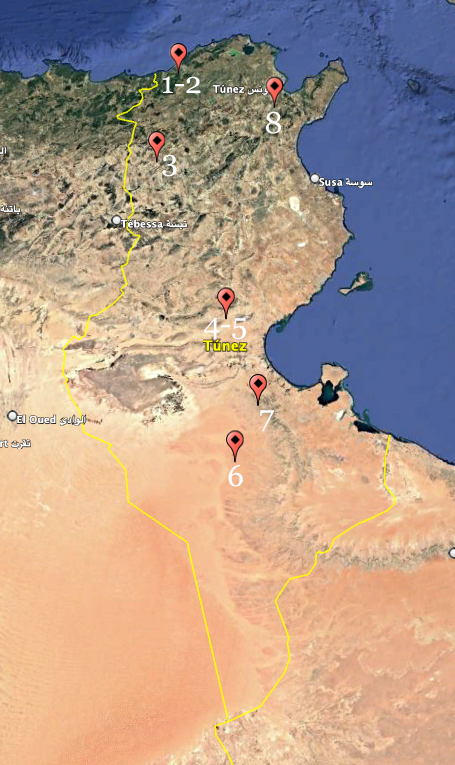
In February 2025 I saw a post of David Brouwer in Facebook, they visited Tunisia and checked some HICROW, finding some reptiles inside, so he confirmed that south Tunisia is like Morocco. We will have a “Tunisia water holes expedition”. David helped us with spots that completed my “google earth” database.
Few weeks before the trip, Ridha send us a message saying that a group of his friends from Tunisia and another from Algeria wanted to join us during the trip. In general, we do not like big groups (that usually means too large photo sessions, disturb animals, coordination problems, etc…), but these guys respected our itinerary and top species so we agreed. Finally, we would be:
A) During the whole trip:
“Spanish Car”:
- Alberto Estremera (“Alberto”)
- Antonio García Franco (“Toño”)
- Me (“Gabri”)
“Ridha Car”:
- Ridha Ouni (“Ridha”): IUCN Assessor for Tunisia fauna
- Mohamed-Ali Dakhli (“Moha”). Expert in birds but with a passion for field trip. Mohamed got the car and hotel reservations during the trip. He was the surprise of the trip. He got that we could be focus in herpetology and avoiding any logistic problem. His email is: mohamedali.dakhli@gmail.com
- Borhen Yousfi (“Borhen”). Biologist specialized in invertebrates.
B) During the first days of the trip (northern areas), we will also have the
“WWF Car”:
- Wael Ben Aba (“Wael”). Freshwater Project Officer-WWF North Africa
- Zakher Bouragaoui (“Zakher”). Freshwater Project Officer-WWF North Africa
C) And finally, a Tunisian influencer, in his own car:
“Dreamer Car”
- Rabii Ben Brahim (“Rabii”). He has a profile in Facebook and Instagram called “The Dreamer”/thedreamerwildandfree+1 where he explains to people about nature in Tunisia. He joined us during some days in the beginning of the trip, and last days.
DAY 1
I arrived to Carthago International Airport in the middle of the day Saturday 24th May after a long scale in Casablanca. Toño and Alberto flied directly Madrid-Tunisia so they have time to keep the car booked by Moha and pick me up.
We drove directly to the first stop: LAKE ICHKEUL. We would meet the other partners there. We were very nervous and could avoid to make a fast stop before Ichkeul. In a mixed habitat between agriculture fields and natural habitat we could see flipping stones the first two species of the trip: a juvenile Malpolon insignitus and a couple of Chalcides ocellatus. All was dry but the temperature was relatively cold (under 25 degrees) so apart of these reptiles we also saw a mouse under a plastic.
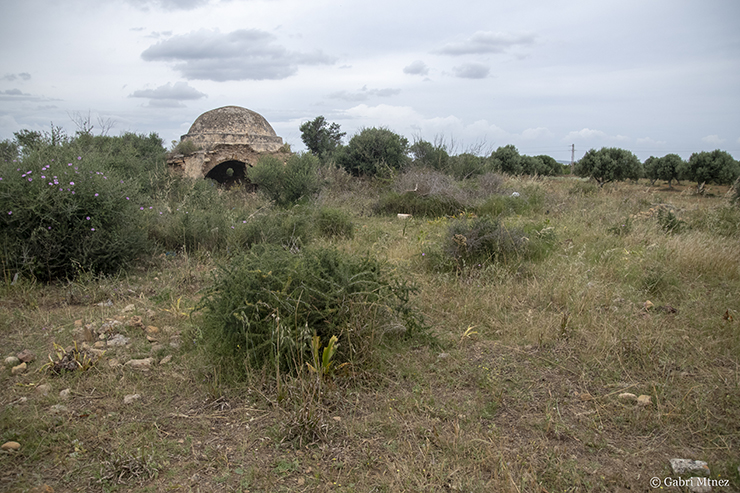
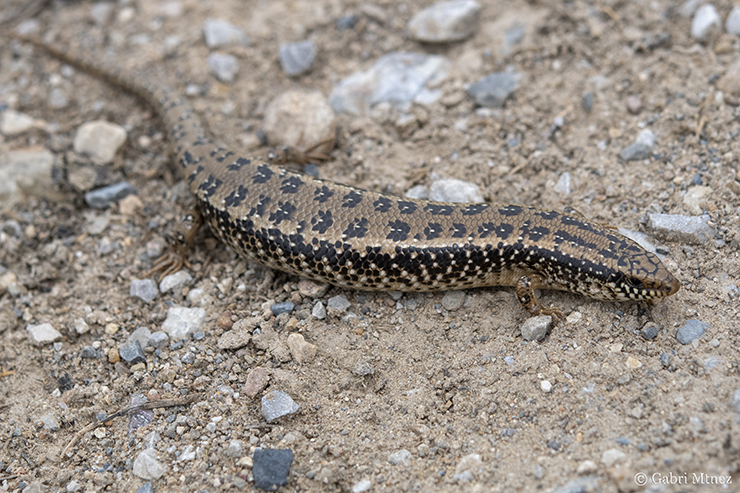
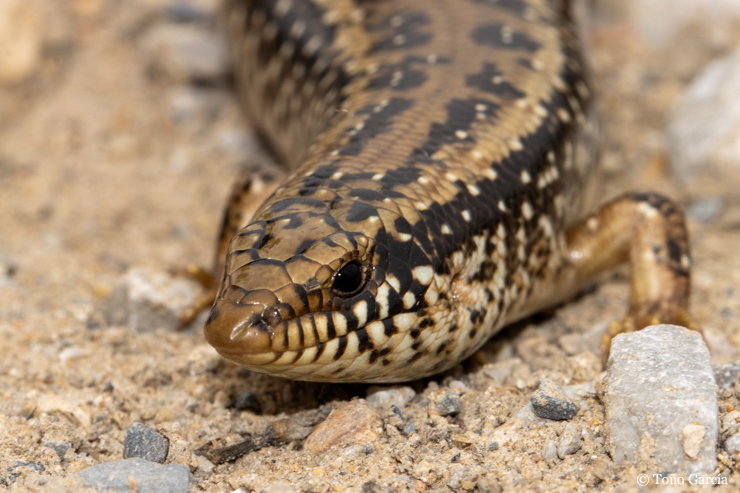
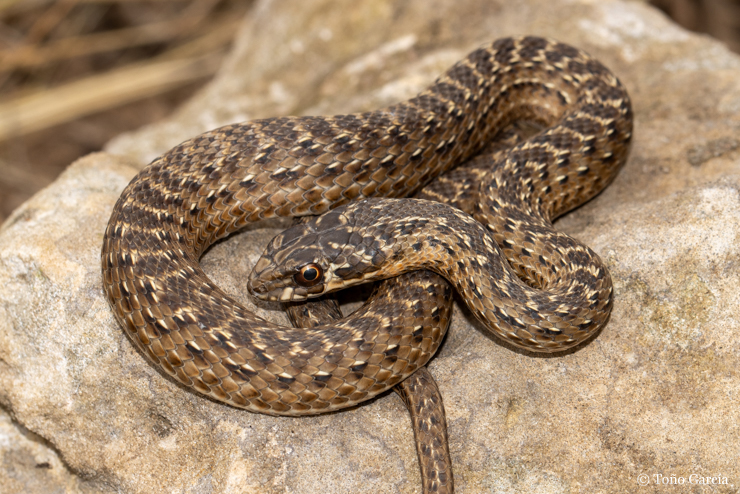
In a rocky area around the lake we meet the Tunisian-Algerian team and after a short presentation we made a short expedition around. The sky was very cloudy and the temperature not very high so we could see some Pelophylax saharicus, Mauremys leprosa, Psammodromus algirus, Tarentola mauritanica and Natrix maura. And flipping a young Testudo graeca and a second very nice Natrix maura. The green water frogs of Tunisia could be Pelophylax saharicus sensu stricto in case of admit P. riodeoroi for most areas of Morocco, and P. zavattarii for most parts of Algeria (Martínez-Solano et al., 2015).
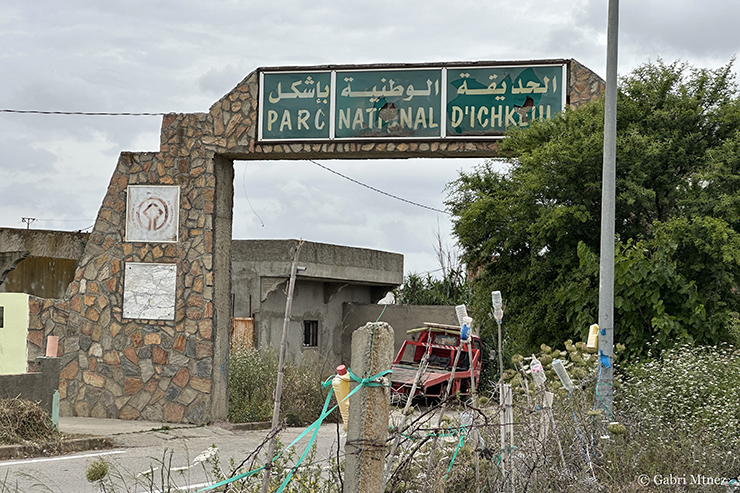
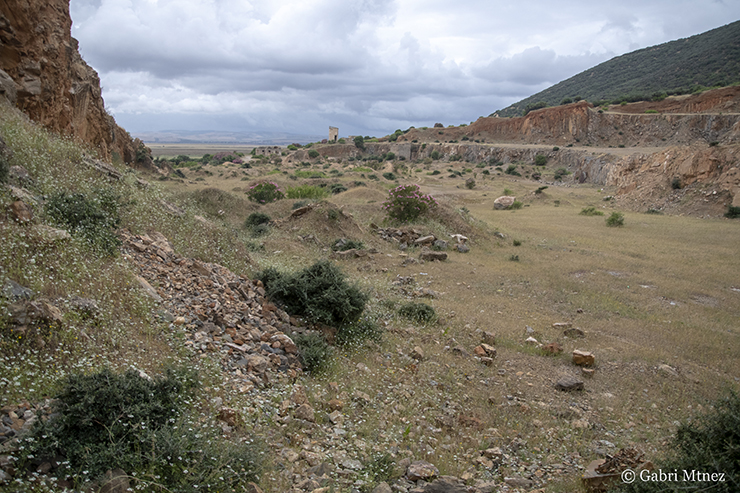
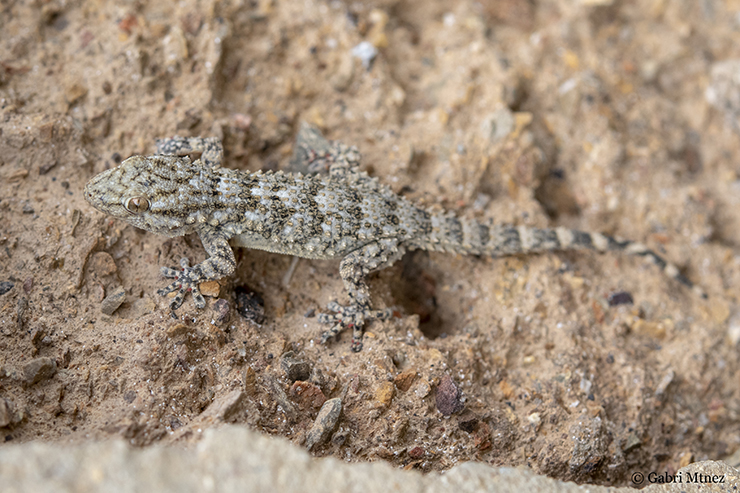

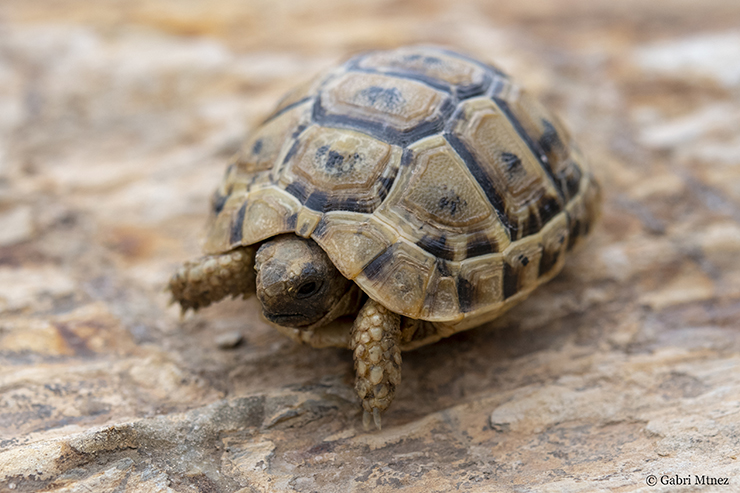

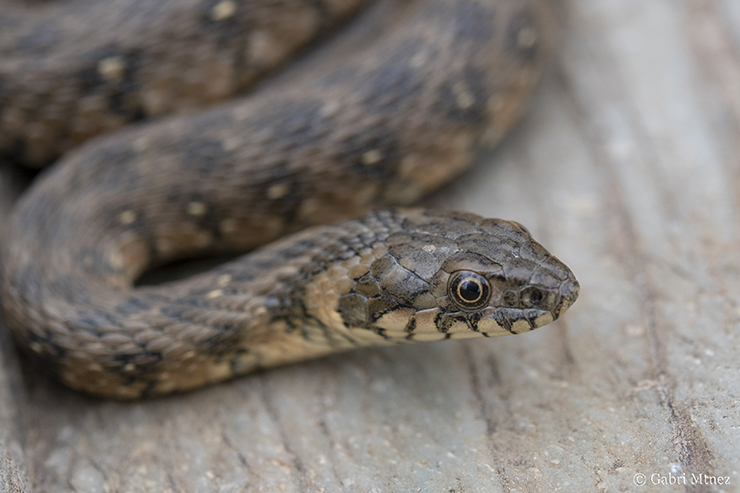
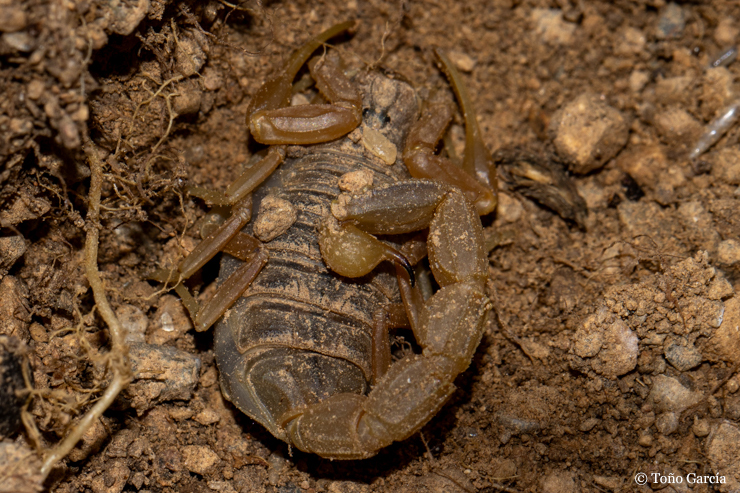

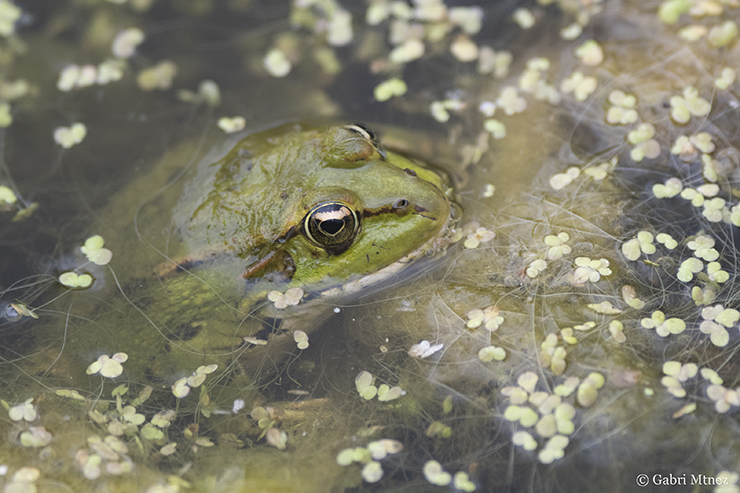
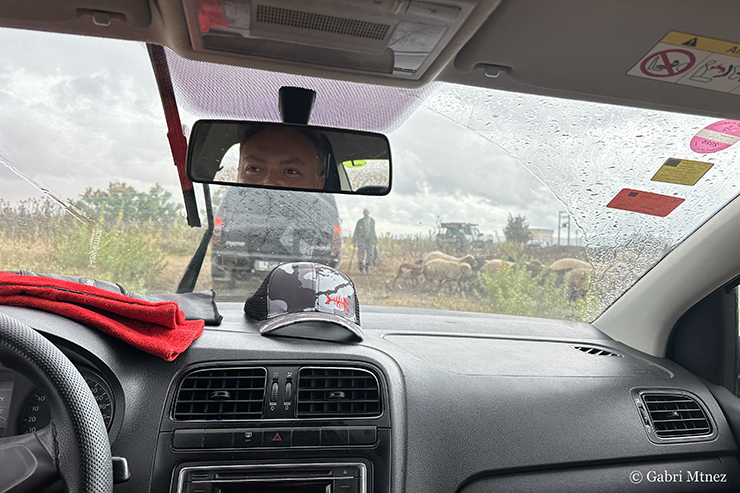
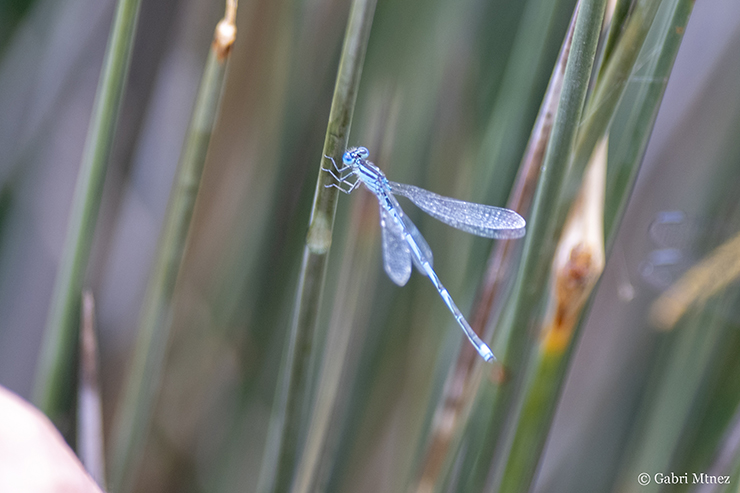
It began to rain so we moved to the west. In Nefza area we made another herping stop in a stream where Ridha found Pleurodeles nebulosus and a DOR Natrix astreptophora in the past. However, we only saw many Discoglossus pictus and some more Natrix maura (2 of them with bilineata pattern). There are only photos of 1 adult specimen of Natrix astreptophora algerica from Tunisia in internet (Martina Kiselova and Václav John), so I knew it would be impossible to find an adult, but my objective was to find a juvenile. However we had no luck so we went to sleep to the “Museée de la Réserve Naturelle Khroufa”. The Tunisian team got permission to visit National Parks and even sleep in some of them so it was a really pleasure to sleep in the heart of a well conserved Mediterranean forest. We made a small expedition before sleeping around the Museum and found an adult Scleroprhys mauritanica and a Pelophylax saharicus, and although the strong wind and cold two gecko species active (Tarentola mauritanica and Hemidactylus turcicus).
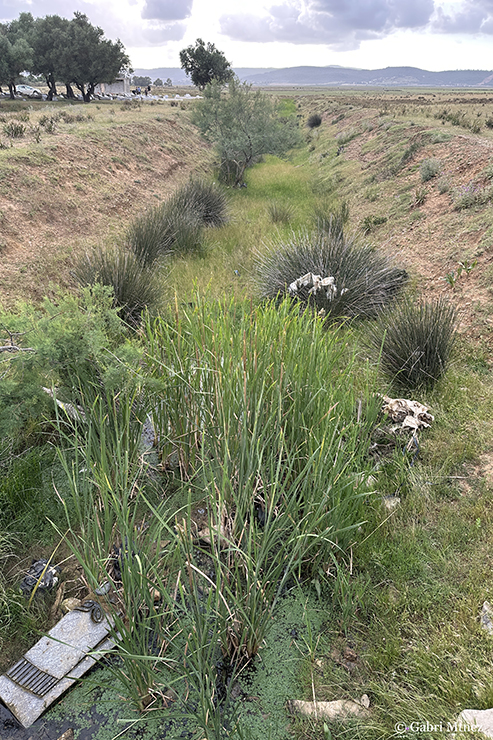
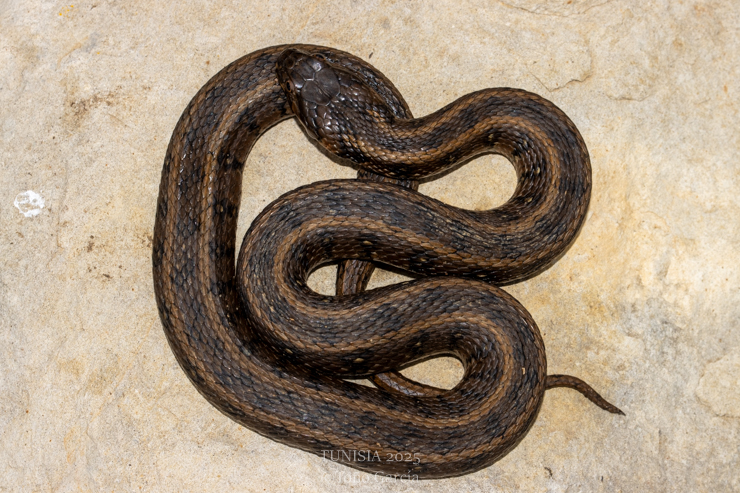
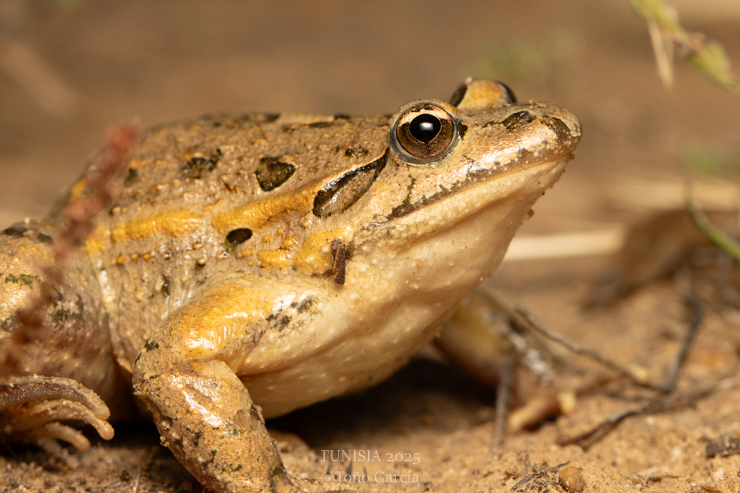

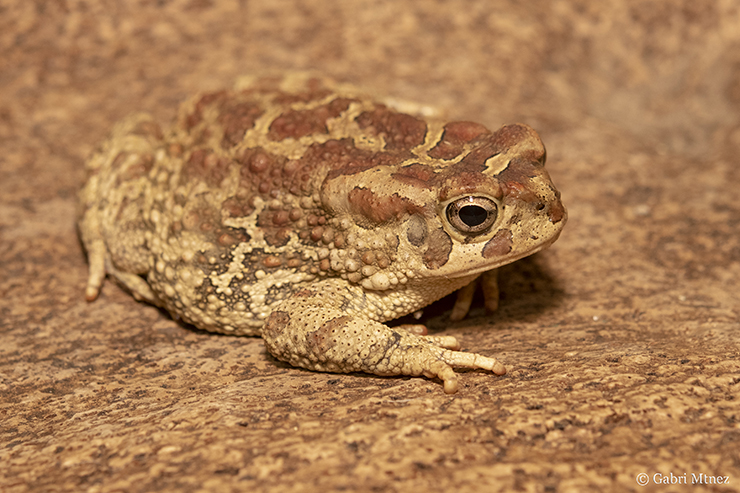
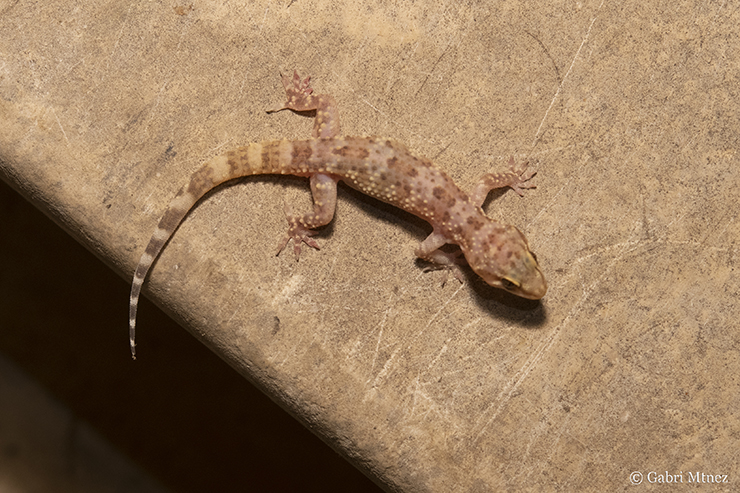
DAY 2
We woke up the second day and drove to a close place were Wael saw a juvenile N. astreptophora some years ago. I had another record of the Portuguese team (CIBIO) in that approximate area many years ago, so that should be a hot spot for the species. However, the ground was wet and cold and we didn´t find any species flipping trash or rocks, apart of several Discoglossus pictus of several sizes. We already missed astreptophora in the 2 spots known by our Tunisian partners so I began to think in the idea that I would not see my top 1 of the trip.
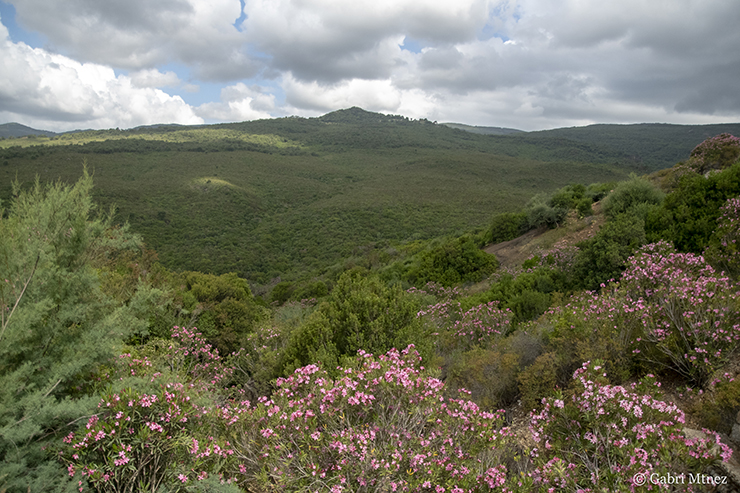
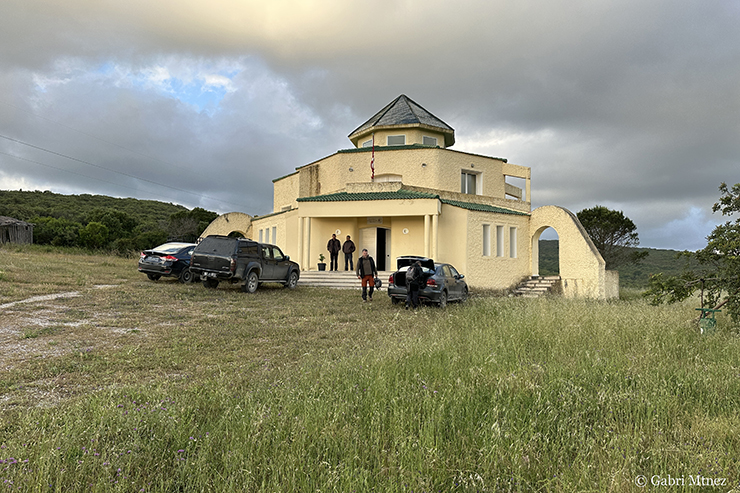
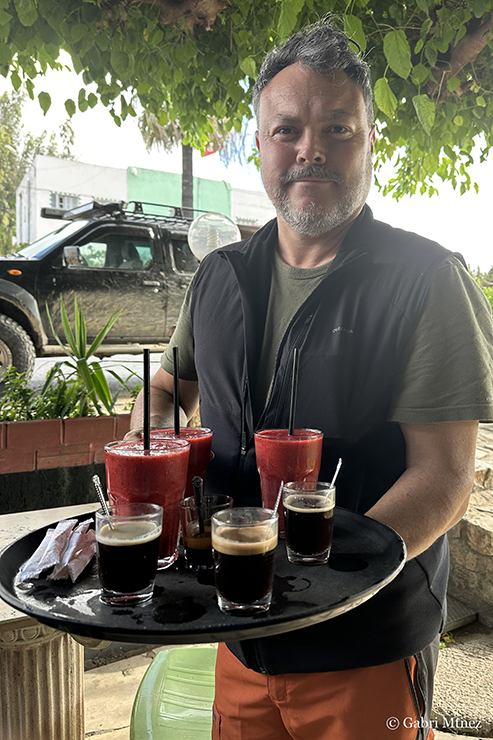
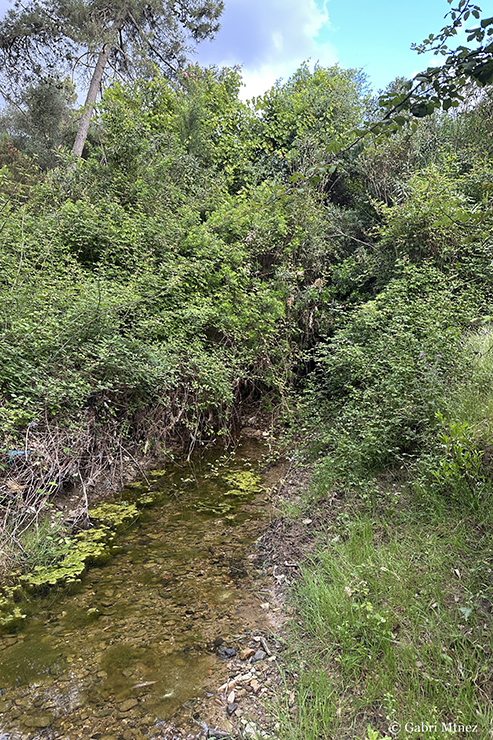
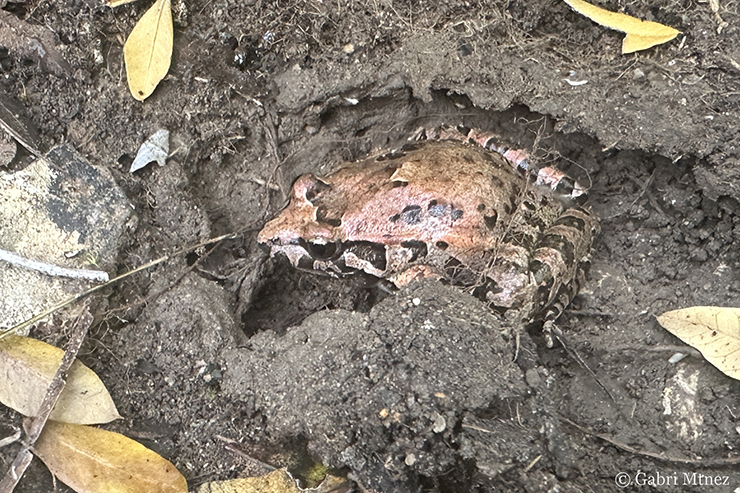
After the best strawberry juice of our lives we drove to Ain Drahem area. According to literature that is possibly the best spot to Bufo spinosus in Tunisia, so I thought that it was the best idea to try to find astreptophora. The day was cold, with clouds, but in a short stop in a meadow with a bit of sun we could see two new species for the trip: Chalcides chalcides and Macroprotodon sp. (cucullatus or mauritanicus depending the authors).
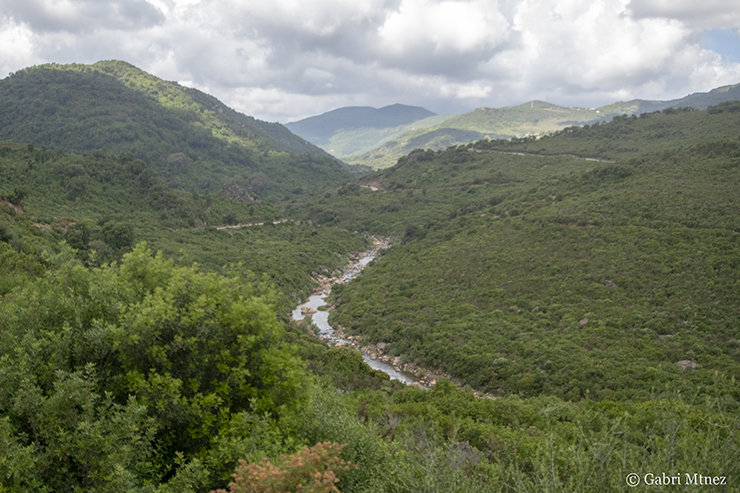
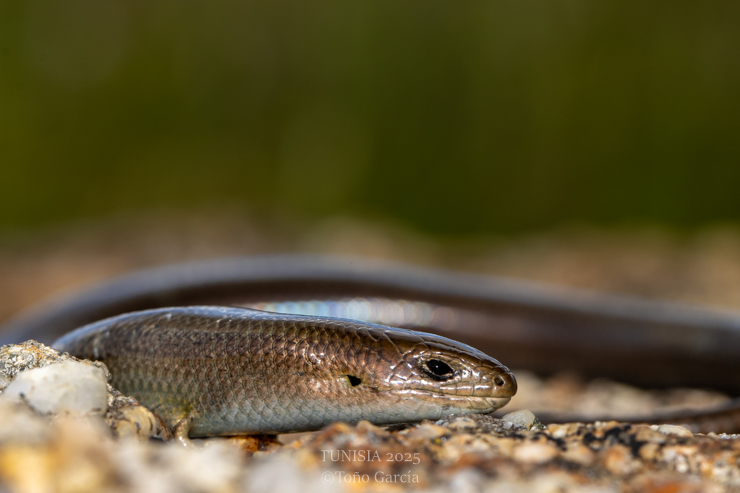
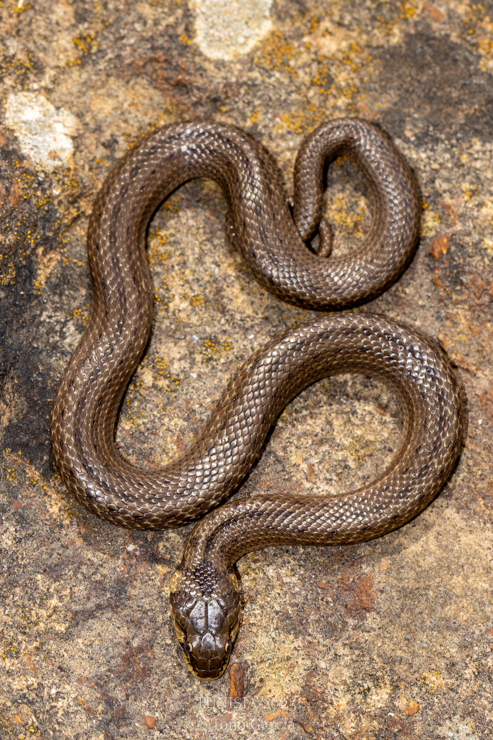
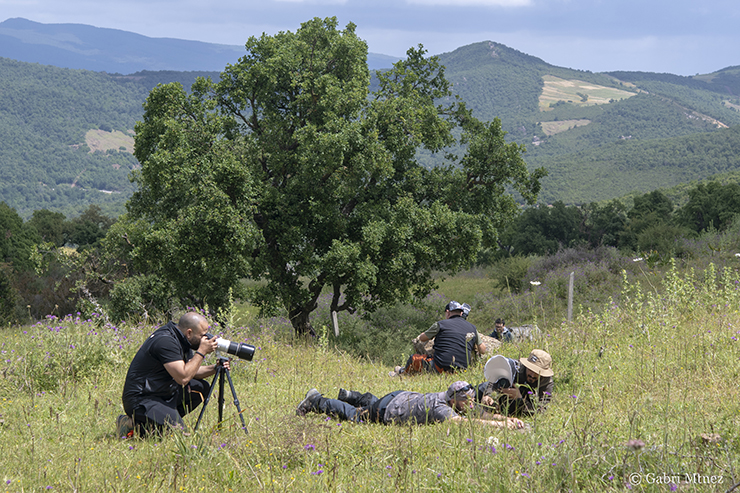
In another stop we could see some Pelophylax saharicus (high mating activity with many males calling and 2 amplexus), more Discoglossus pictus, Podarcis vaucheri, Mauremys leprosa and Natrix maura.
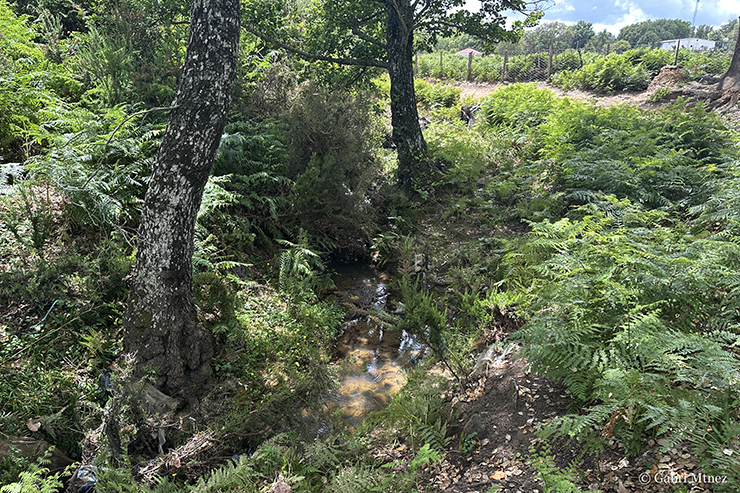

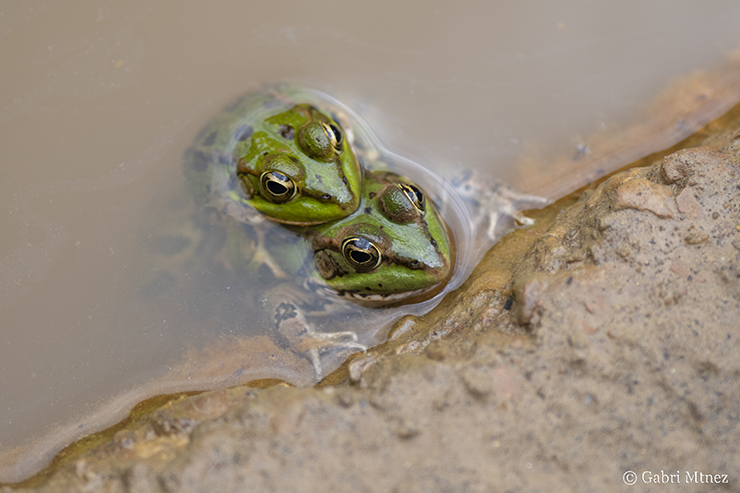
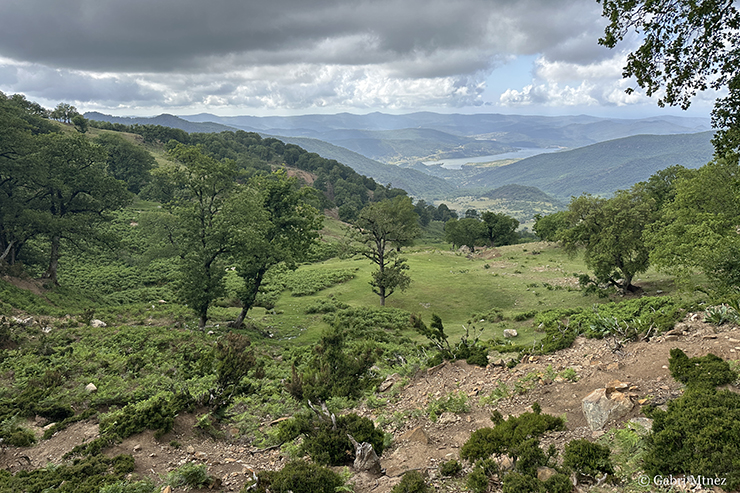
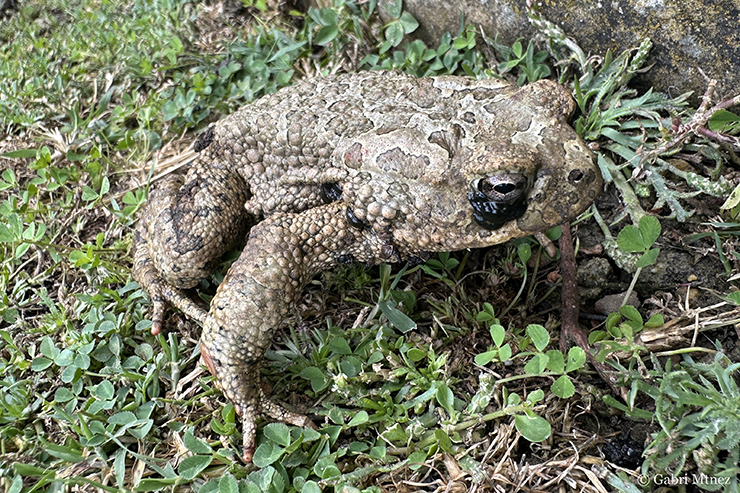
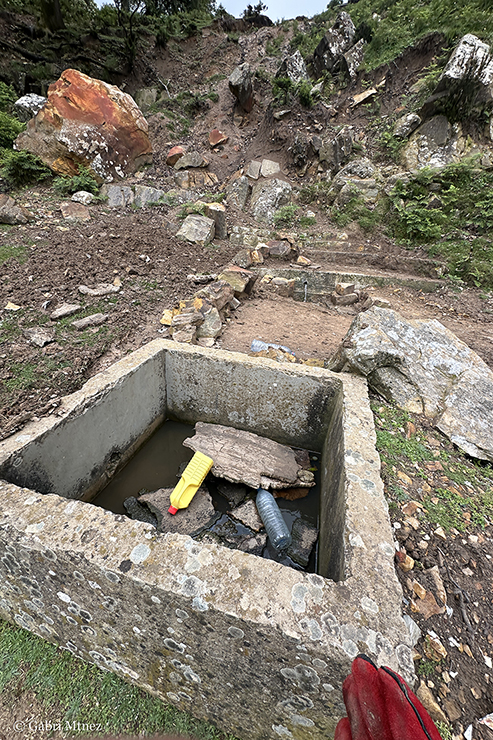
Finally in another stop, we saw one of the secondary goals for the trip: Timon pater. Although the cold weather, we were lucky enough to see one under a stone.
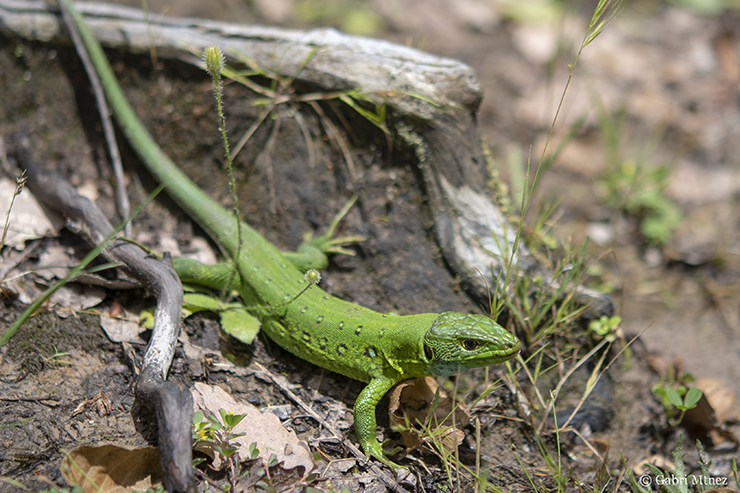

We visited another interesting spot but there were lot of people around the stream, with strong music and lot of garbage. So, after 5 minutes finding only Pelophylax saharicus and Chalcides ocellatus, we moved and return to the sleeping place. At the end of the day, in a river we made a last expedition and saw more Natrix maura (numbers 11 and 12 for the trip) and a uniform Sclerophrys mauritanica.
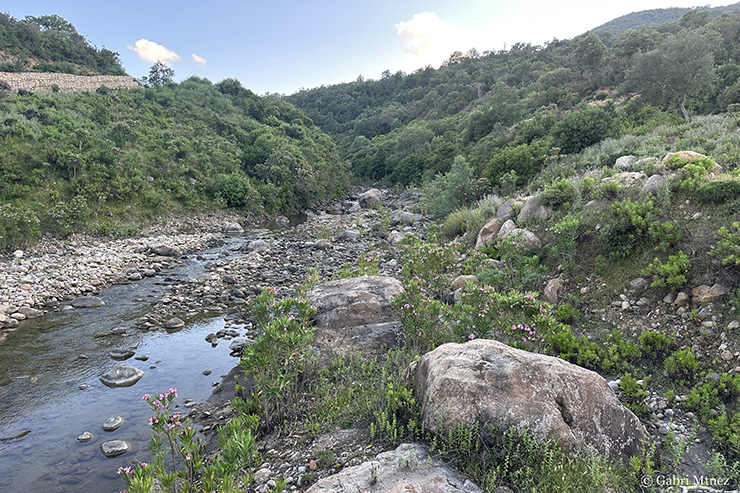
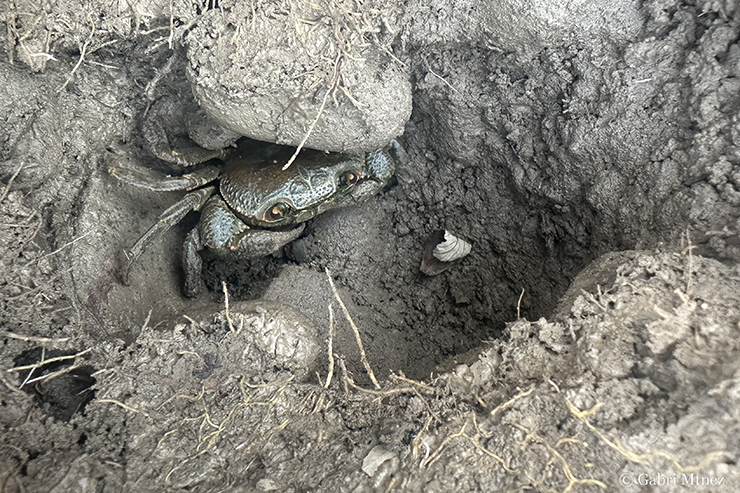
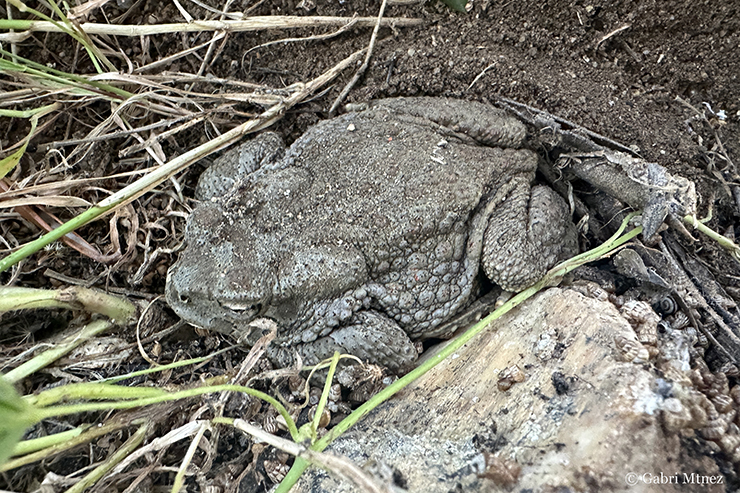
DAY 3
After our second and last night in the “Museée de la Réserve Naturelle Khroufa”, we would go to El Feija Nationa Park. Alberto was nervous because of the low activity of reptiles in these first days of the trip, and he was impatient to go to the desert.
In our way to El Feijda NP we (Spanish and Ridha cars) would make a last stop in a water pond where from Google looks amazing for amphibians, similar to habitats where I found astreptophora in Morocco. The day was sunny and the temperature better than in the previous days. In the first stop in Ain Drahem-Bni Mtir area we only saw some Pelophylax saharicus and Discoglossus pictus. We visited a second water pond and after 2 minutes walking we saw a young Natrix astreptophora algerica moving in the leaves. We continued searching around and it was incredible to find also moving in the leaves a young adult Natrix astreptophora algerica.
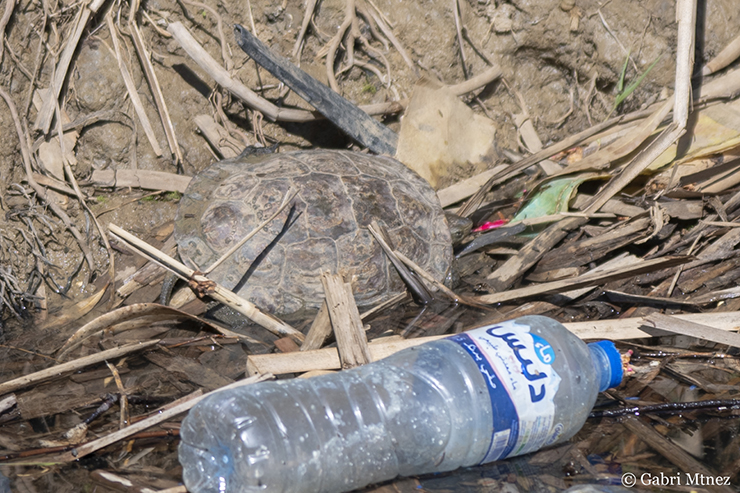

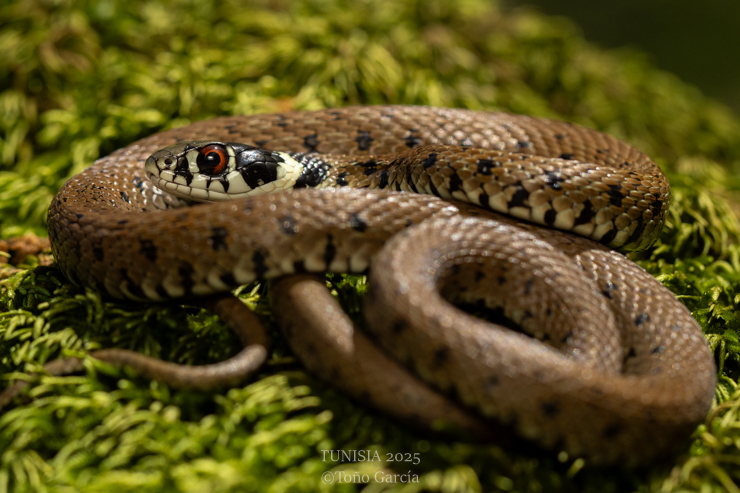
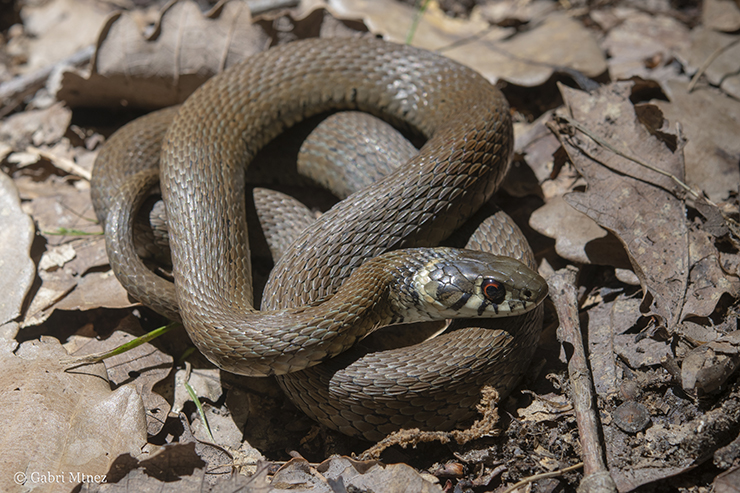
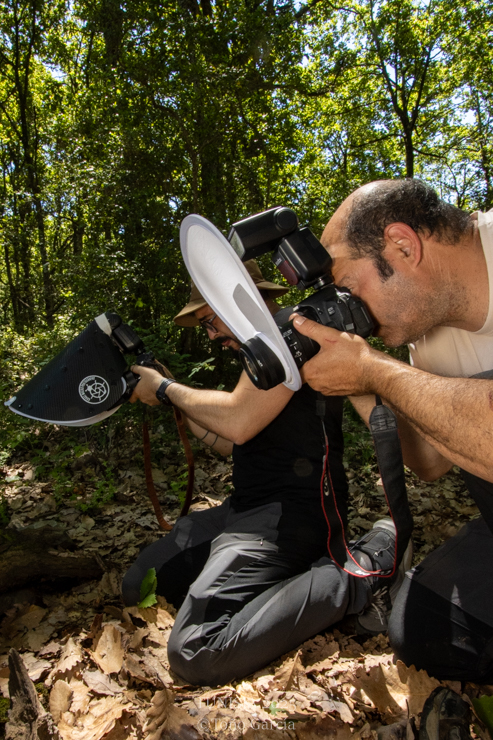
We made a short trip in a place where Ridha found in the past Bufo spinosus. The temperature was already too hot and after seeing some Pelophylax saharicus, Sclerophrys mauritanica and Mauremys leprosa, we moved to meet Wael and Zakher, eat something and go to El Feijda for sleeping.

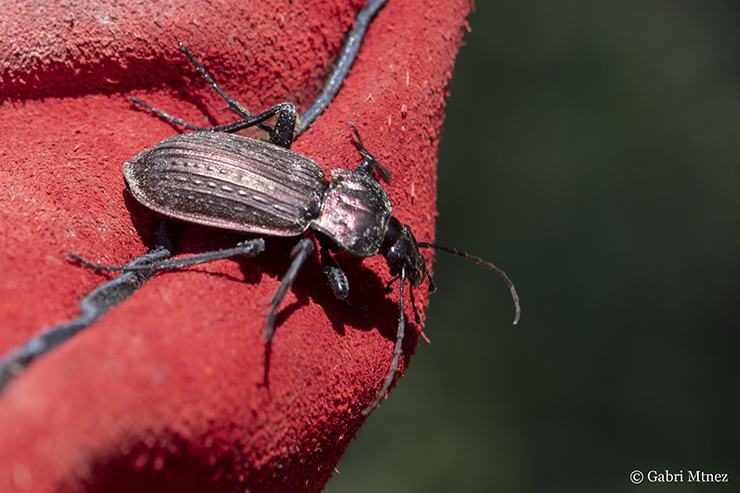
Wael and Zakher kept us to an amazing water pond (my favorite spot during the trip for northern Tunisia), where we could see Pelophylax saharicus, many Hyla carthaginiensis (= Hyla numidica), tadpoles of Pleurodeles nebulosus, Psammodromus algirus, Timon pater, Mauremys leprosa, Emys orbicularis, Natrix maura and a shed of a young Natrix astreptophora algerica.

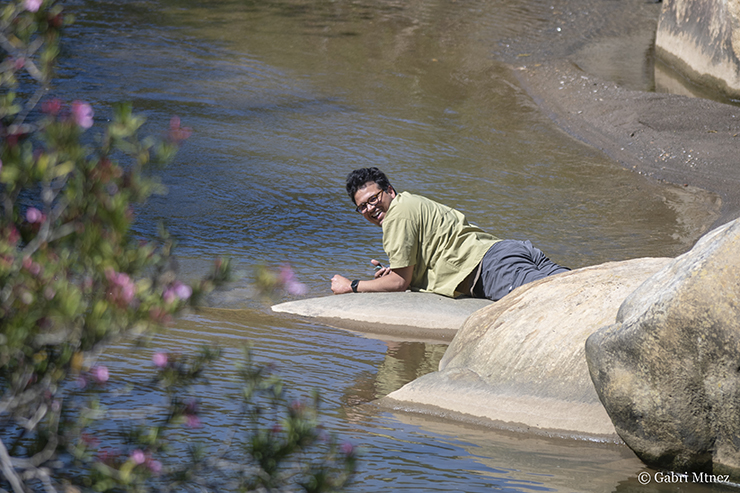

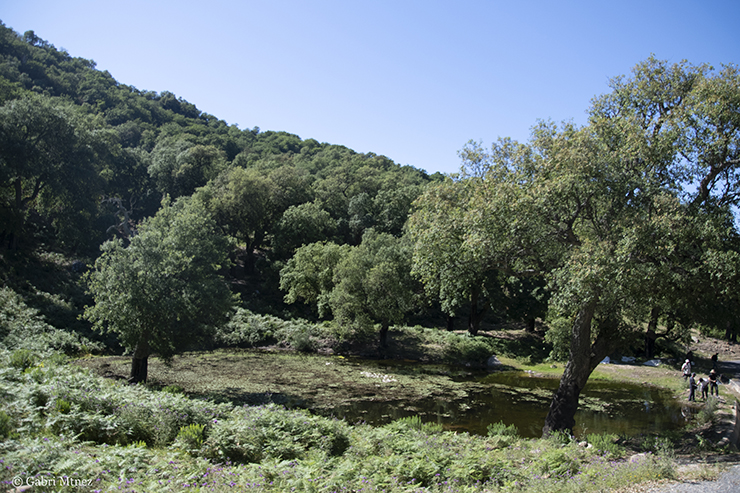
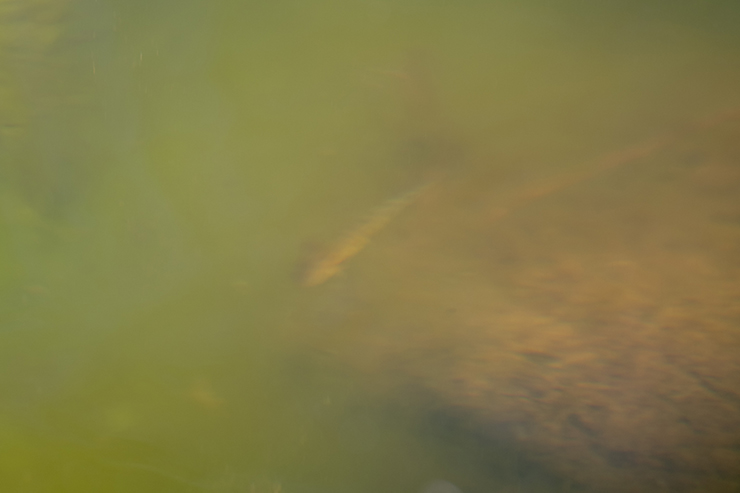

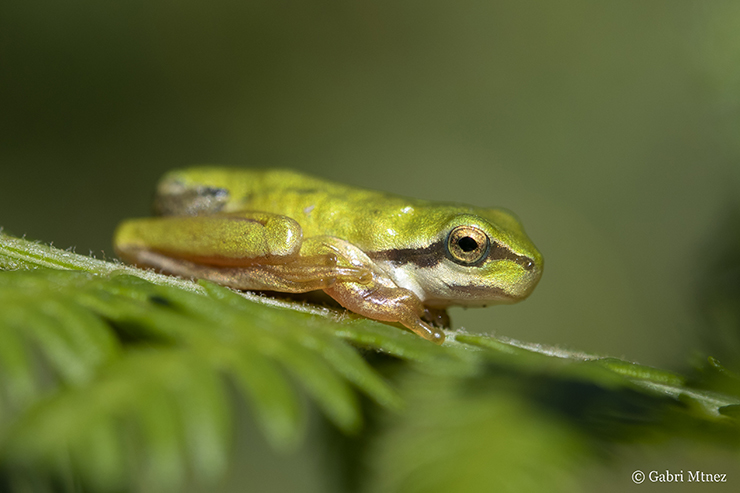
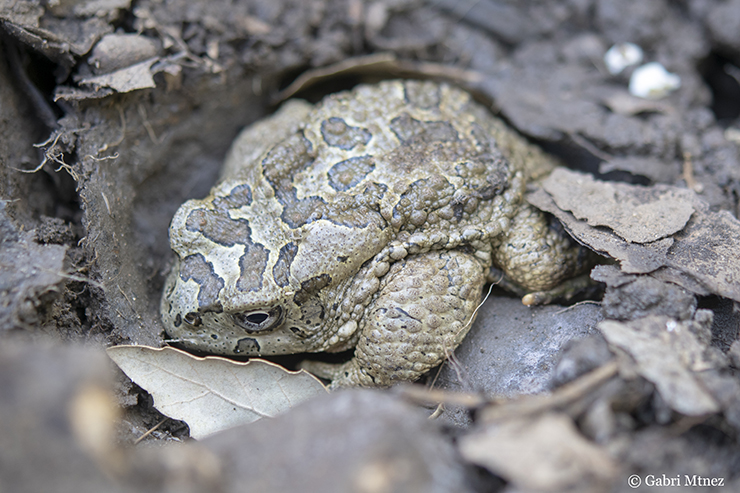

Our Tunisian friends received a call of El Feijda NP rangers saying that finally we could not sleep in that park, so close to the Algerian border, so after a friendly discussion we said bye to north Tunisia and began the trip to the south. We would lose the chances to find Bufo spinosus and with a miracle Vipera monticola (saintgironsi?) but we would have 1 more night in the south. Alberto now was very happy because after some days in the north, he needed sand and Sahara species. We drove to El Kef for sleeping. After the sunset the temperature fell down very fast so we didn´t make a nocturnal herping and just went for dinner to a local restaurant to talk about herpetology.
DAY 4
We visited the Trogonophis sp., spot and after some Chalcides ocellatus under stones, we could see two specimens of Trogonophis sp. A phylogenetic study showed that Tunisia and east Algeria populations represent a independent cryptic taxonomic unit of T. wiegmanni (Salvi et al., 2018).

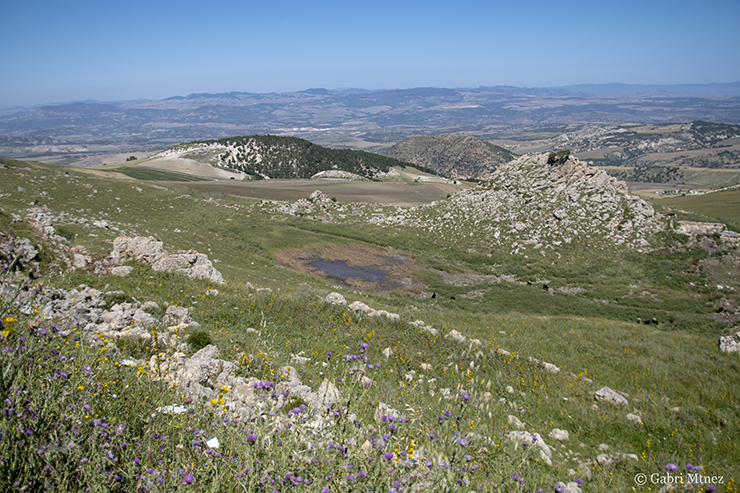
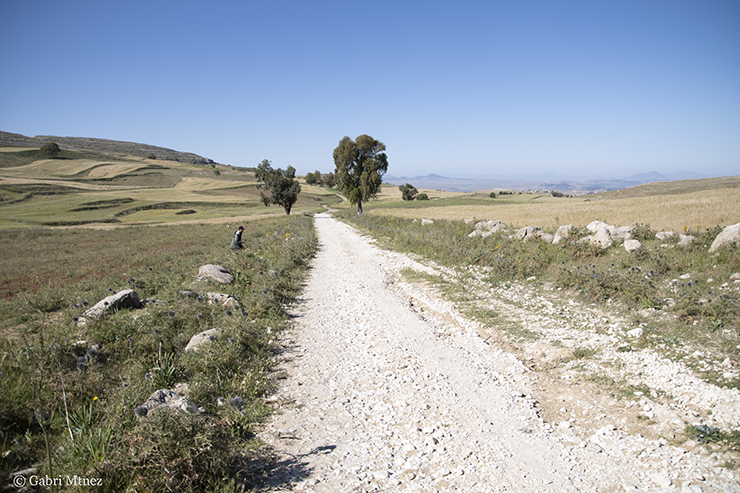
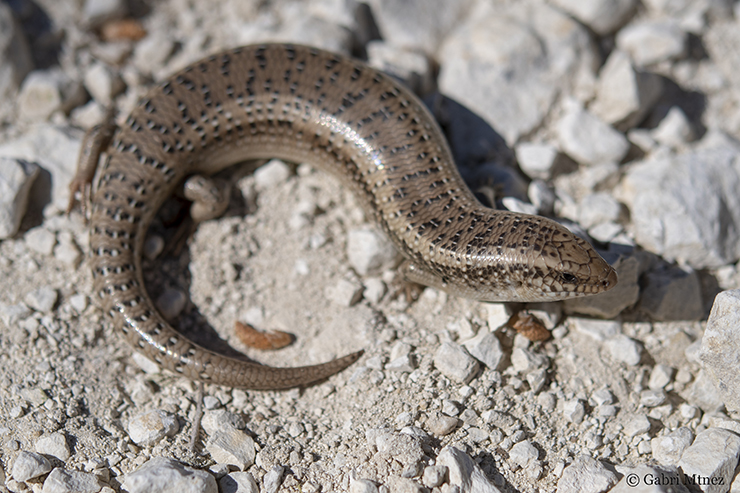
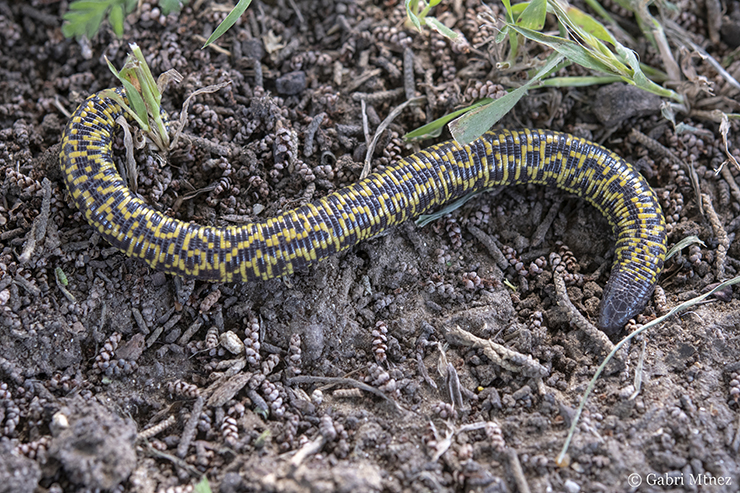
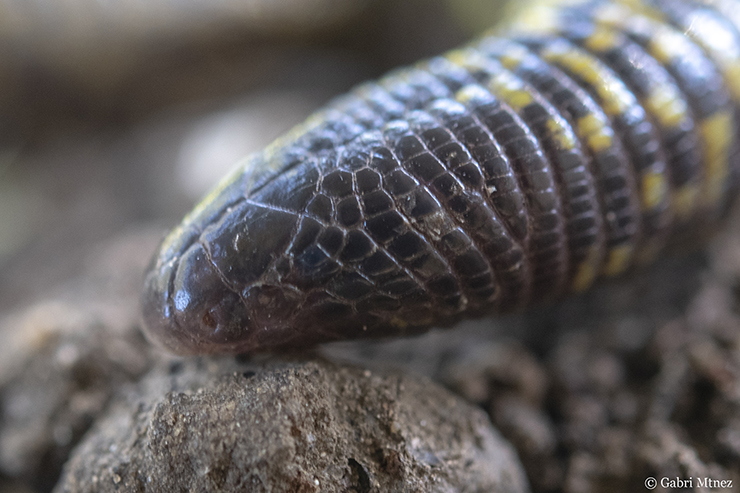
We said bye to Wael and Zakher and went south to Bou Hedma. Meantime we enjoyed of the transition of habitats.
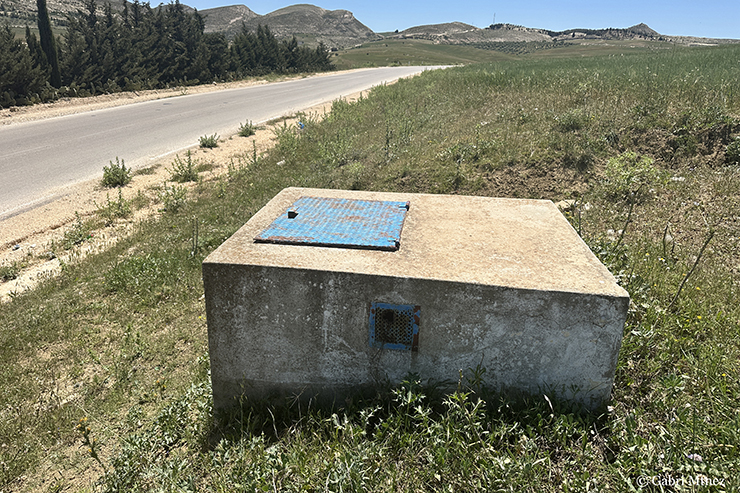
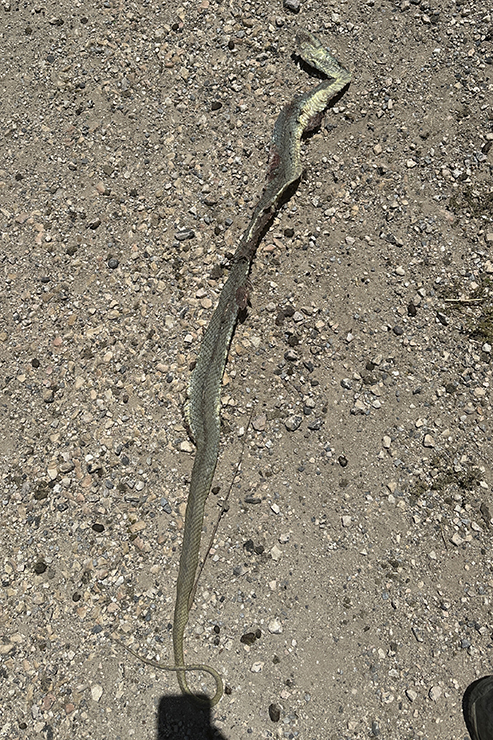
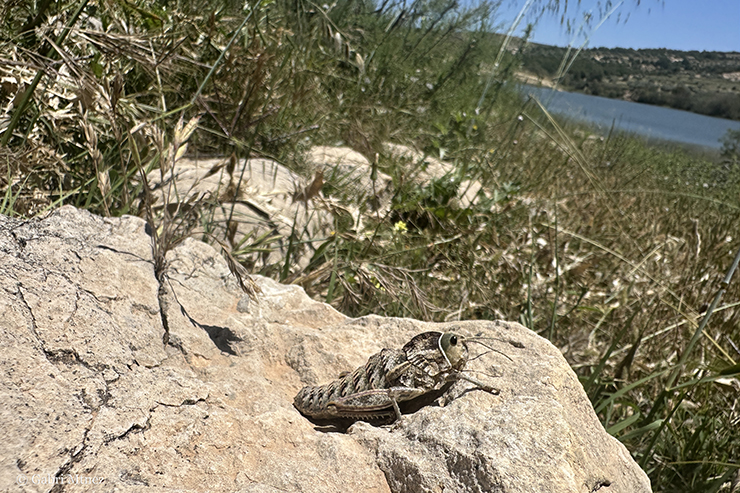
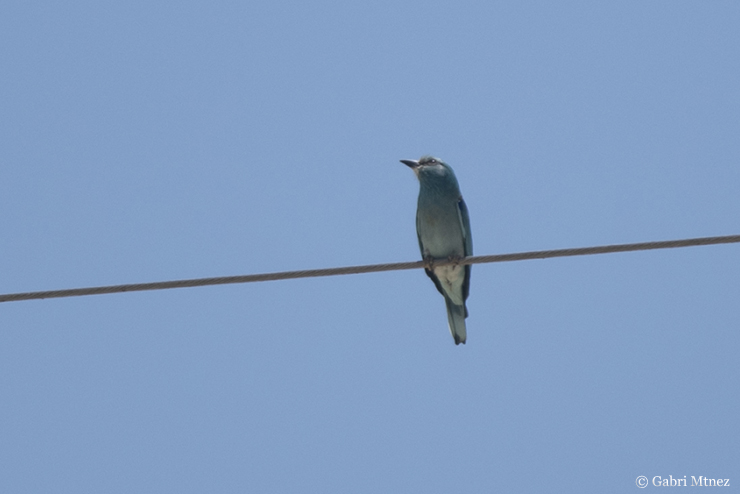
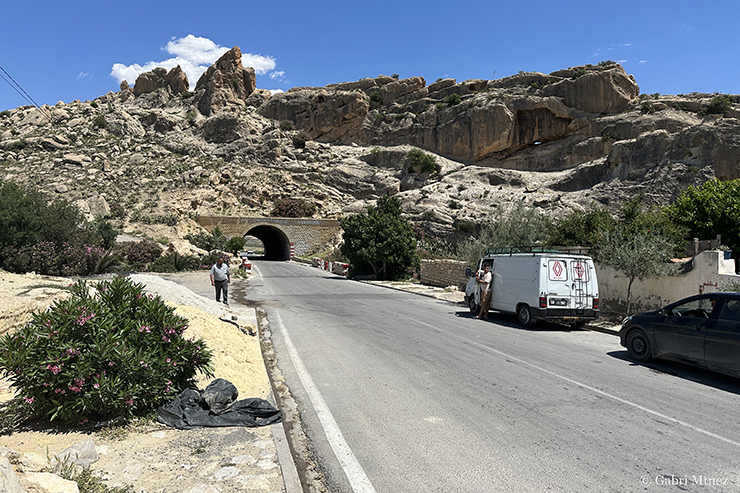

We arrived to Bou Hedma after many hours driving and directly visited the “hostel”, the house of an ex-ranger of Bou Hedma. A nice place just in front of the park. The ex-ranger told to Ridha that there was a large cobra dead in front of the Bou Hedma entrance. Ridha visited the spot whereas we were preparing for the night expedition and confirmed that there was a Naja haje dead.
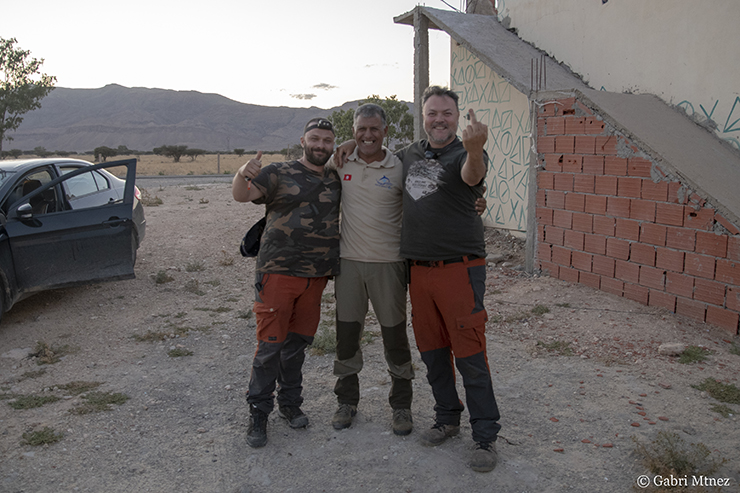
We insisted to the Tunisia team that the most important was the 2-3 first hours of the night for herping, and later we could take the dinner, so we directly visit a nice habitat and began the expedition.
I was very excited when I saw a habitat very similar to the one where we found 3 Scincopus fasciatus in Mauritania few years ago. A sandy substrate with big spiny bushes with holes. In few minutes we saw the first reptile, Stenodactylus petrii (a good signal because it was also present in the Mauritania Scincopus habitat), and just later a juvenile Scincopus fasciatus. We continued searching and finally we found in total 5 Scincopus fasciatus, many Stenodactylus petrii and 2 Spalerosophis diadema cliffordii. I was a bit disappointed to not find Echis pyramidum leucogaster in that habitat but Ridha told me that Echis in Tunisia is extremely rare and always in rocky areas.


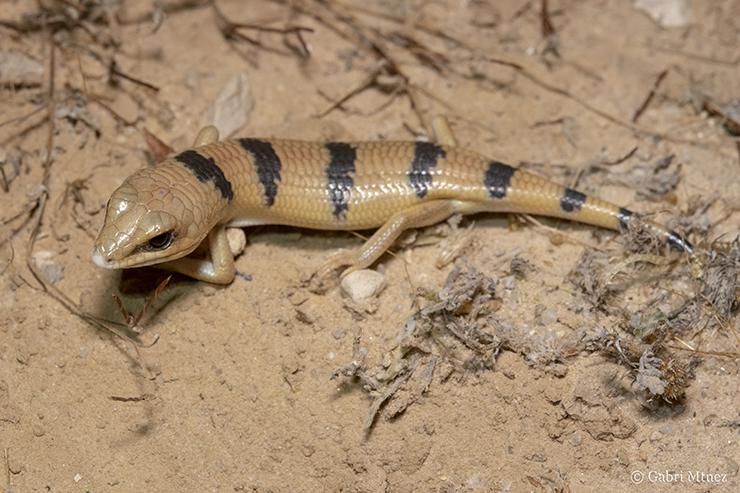
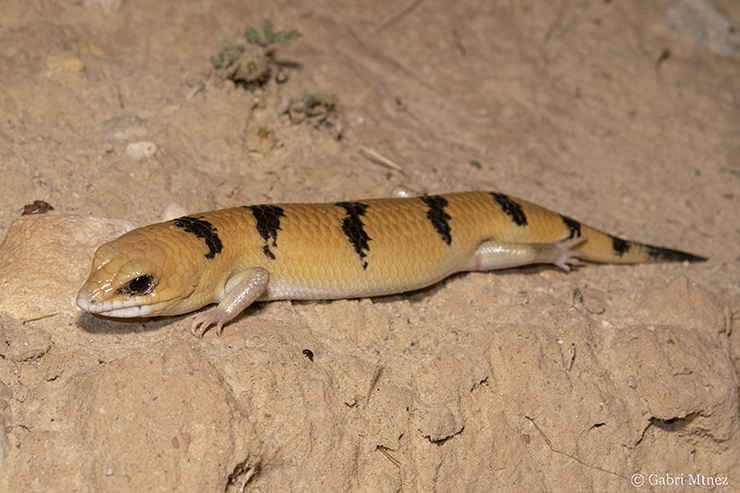
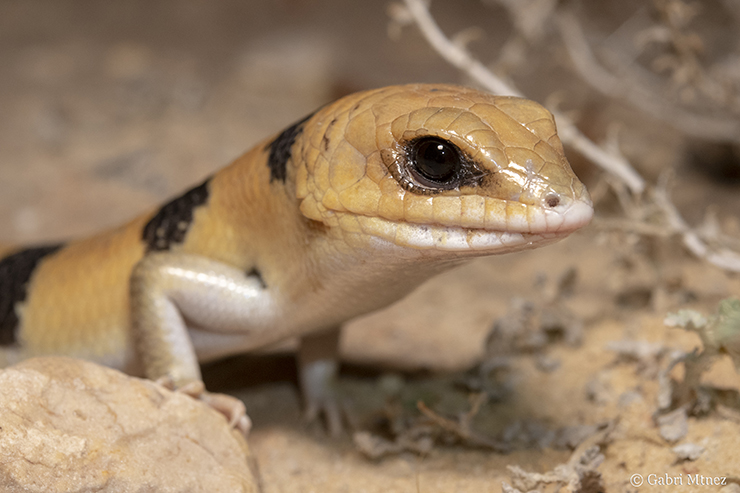
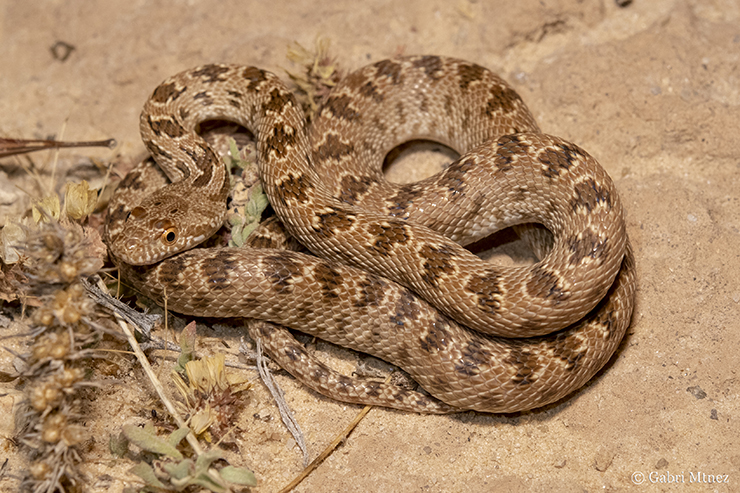
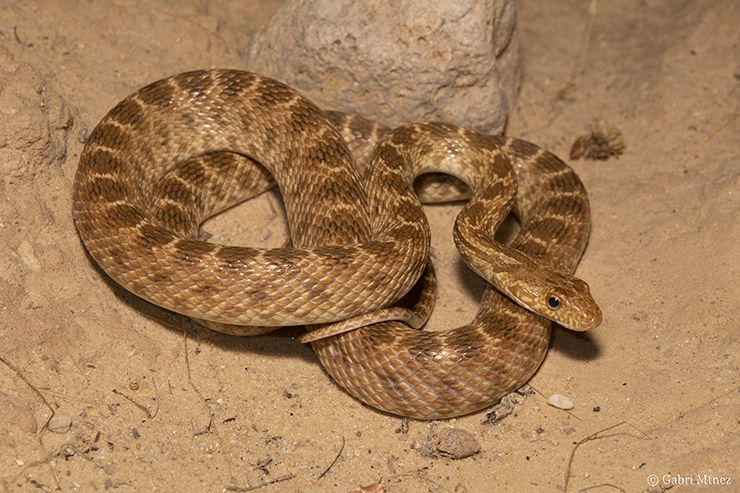
When we arrived to our hostel, we saw in the road the first Stenodactylus mauritanicus of the trip. In the hostel/guest house two local girls appeared with amazing food to end a magic night. It is interesting that in Morocco Stenodactylus mauritanicus has the same aprox. distribution of Uromastyx nigriventris and Spalerosophis dolichospilus. However, in Tunisia the latter species are substituted by the Saharan species Uromastyx acanthinura and Spelerosophis dolichospilus, and however, Stenodactylus sthenodactylus only appears in the extreme south of the country.

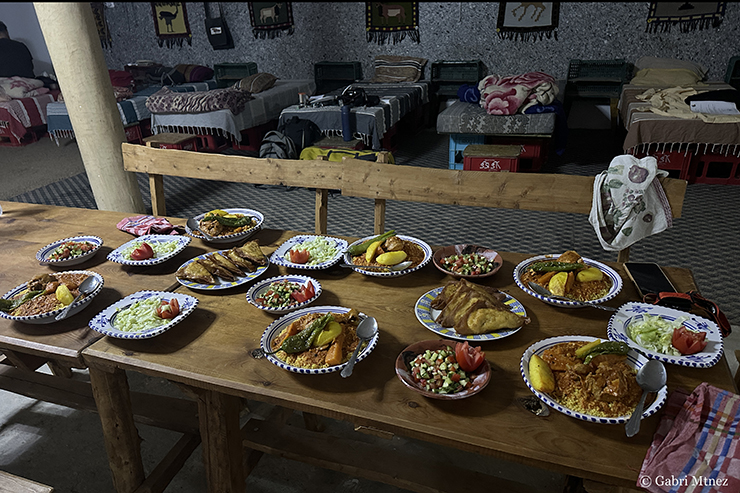
DAY 5
We began the day 5 and after a breakfast we began to drive in secondary road checking HICROW. In some minutes Moha was nervous asking why we waste the time checking these infrastructures, there was a heavy rain few days ago and they were full of water. We explained that sometimes they have water but animals survived in the corners or above plastic bottles, and many times the HICROW is broken and is empty so is easy to find amphibians or reptiles trapped inside. I have to recognize that we had a lot of pressure in the first HICROW, until we could rescue some Bufotes boulengeri and a we saw a dead Hemorrhois algirus algirus. With that, the Tunisia team began to trust in the HICROW as way to find reptiles and after 5 more, we rescued a Scincopus fasciatus trapped.
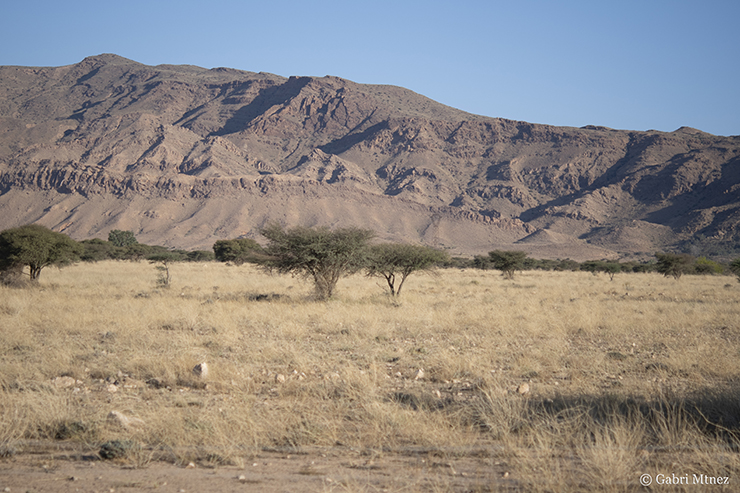


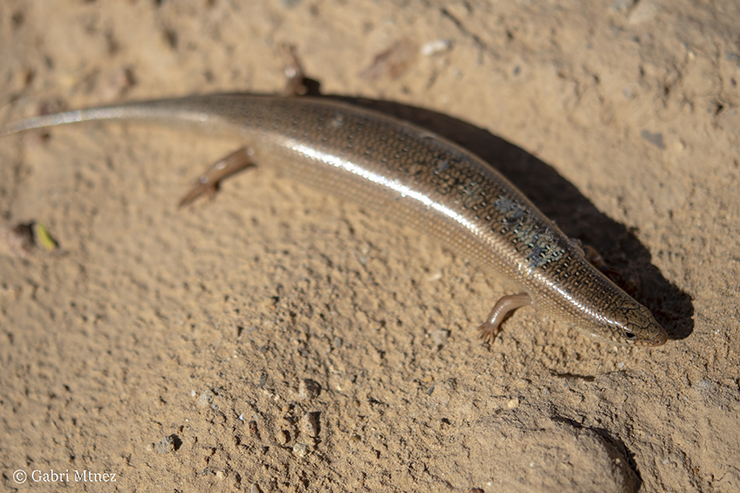
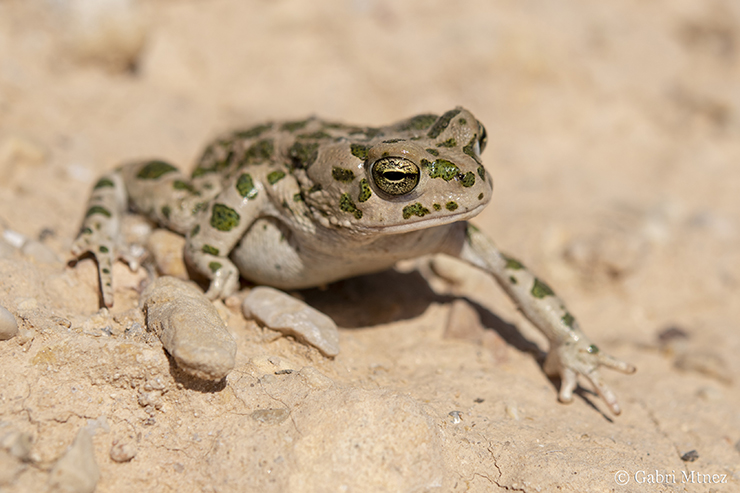
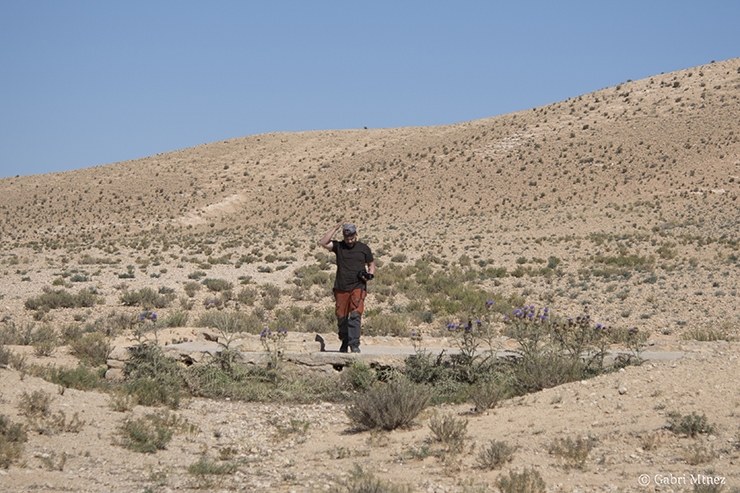
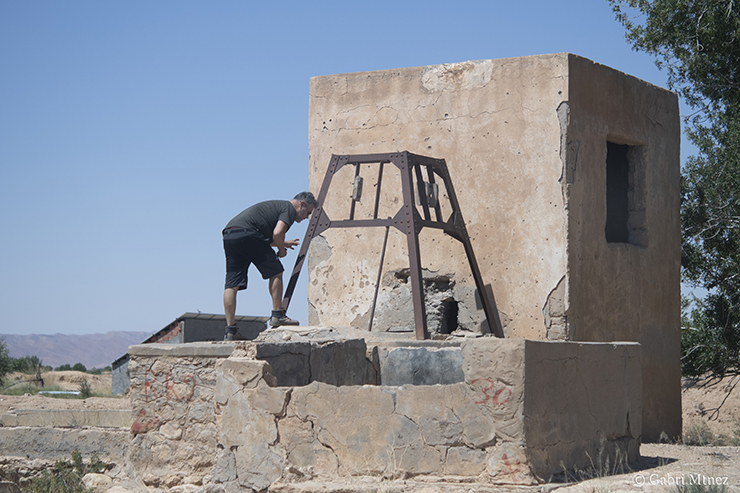
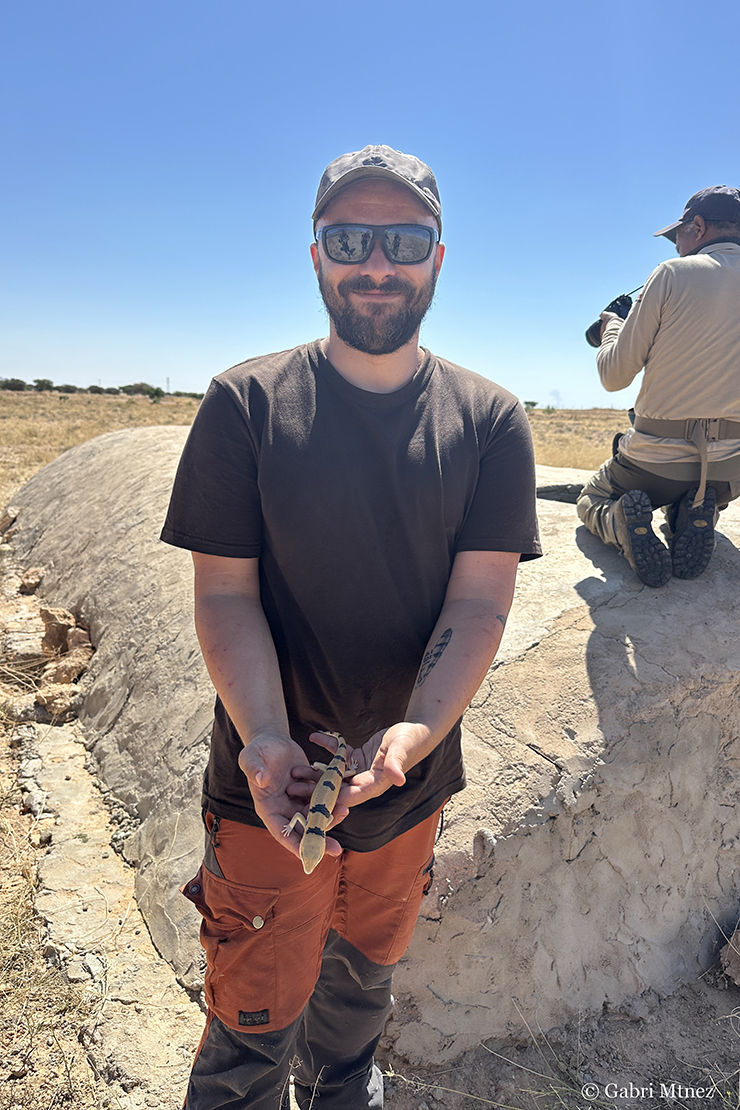
We visited an oasis where Ridha though that there were Naja haje, Daboia mauritanica and Uromastyx acanthinura. The temperature was already very hot so we only found some frogs in the water (Pelophylax saharicus).


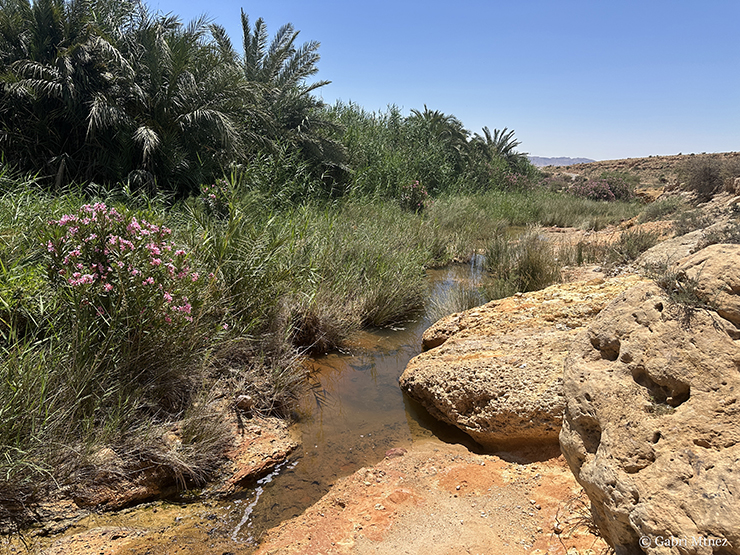
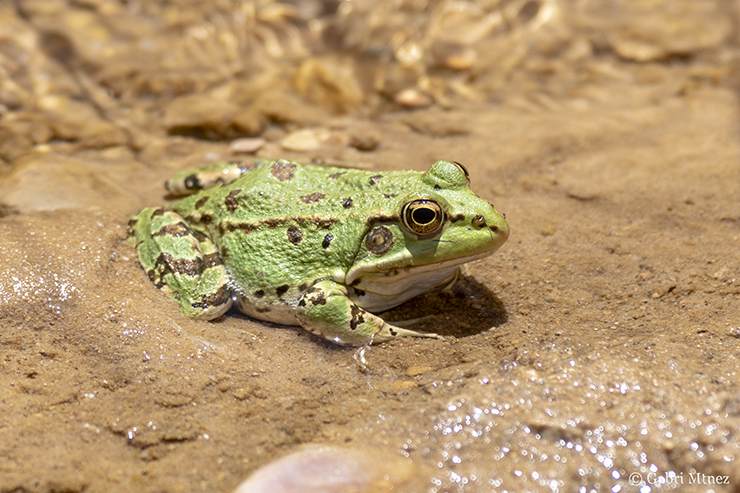
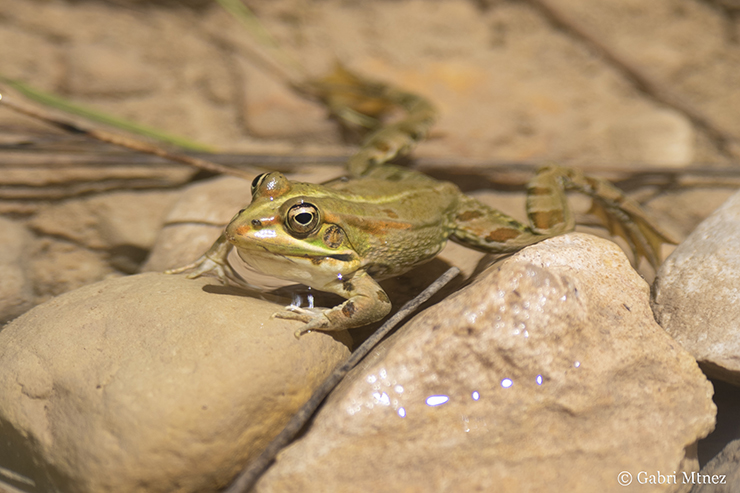
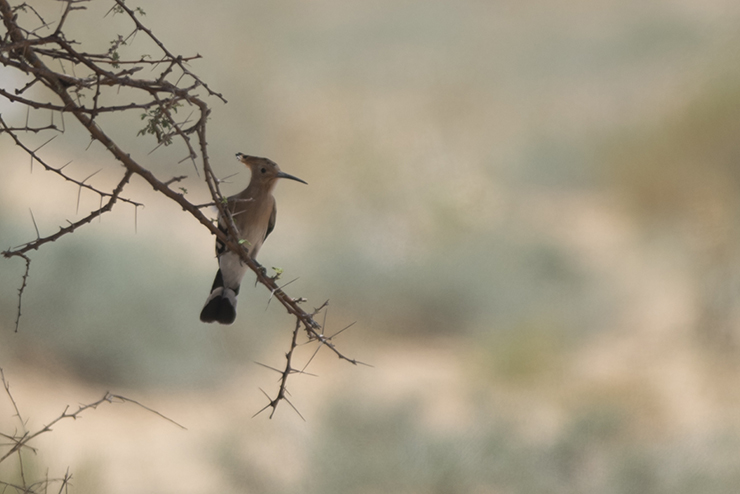

We moved to the south some kilometers and after eating we discussed and finally agreed to try another night in Bou Hedma, this time in a rocky area. Returning to Bou Hedma we could find a dead-on road Psammophis schokari and in more HICROW we rescued 2 Malpolon moilensis and 2 stripped Psammophis schokari.


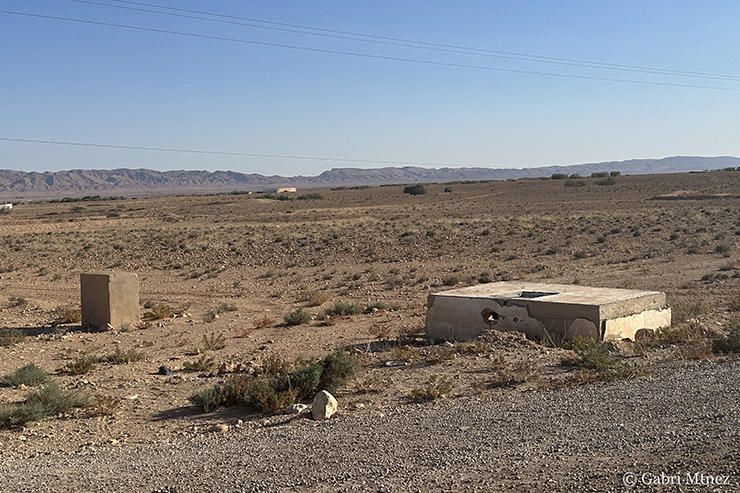
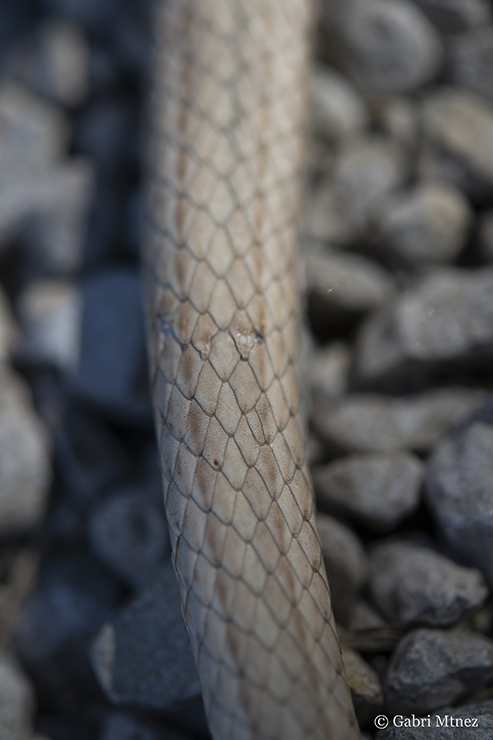

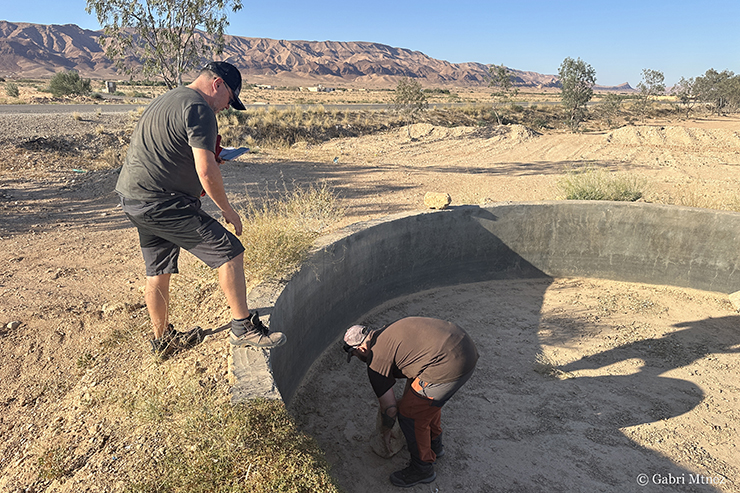
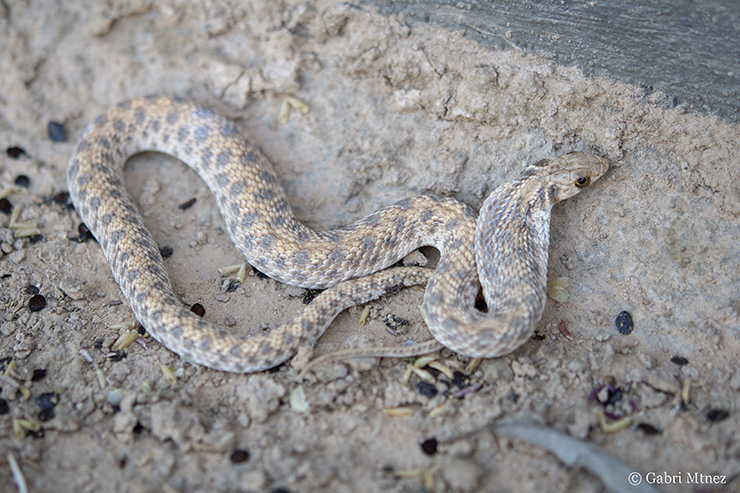
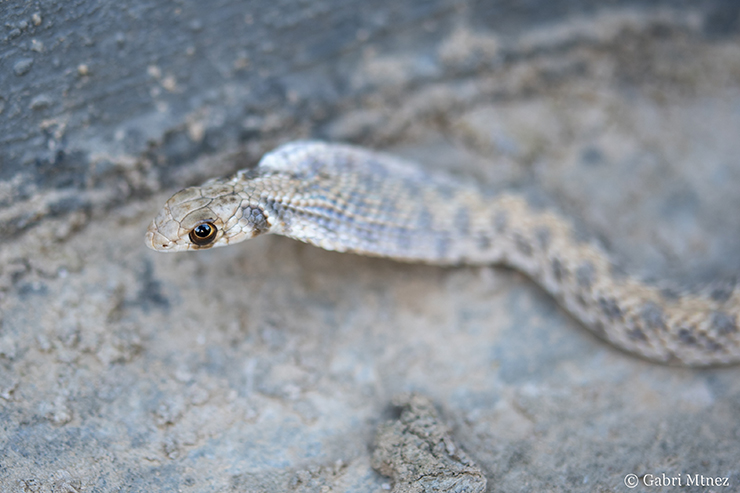
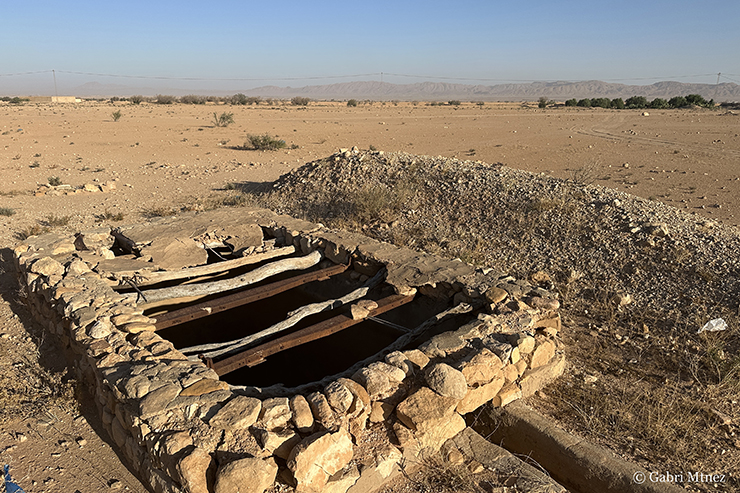
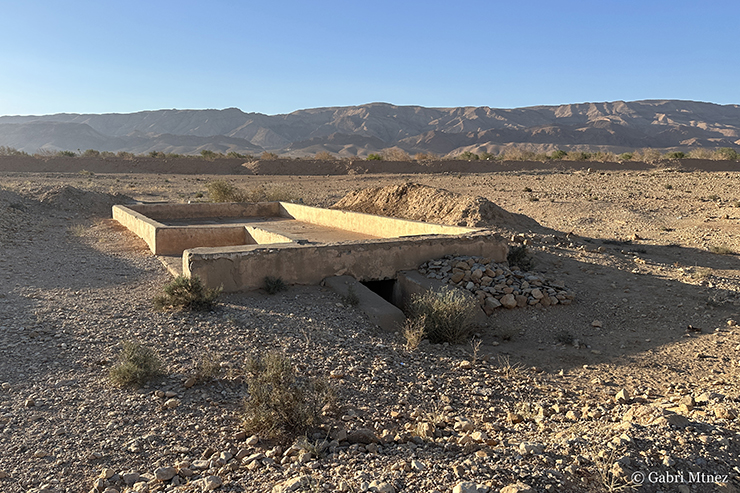
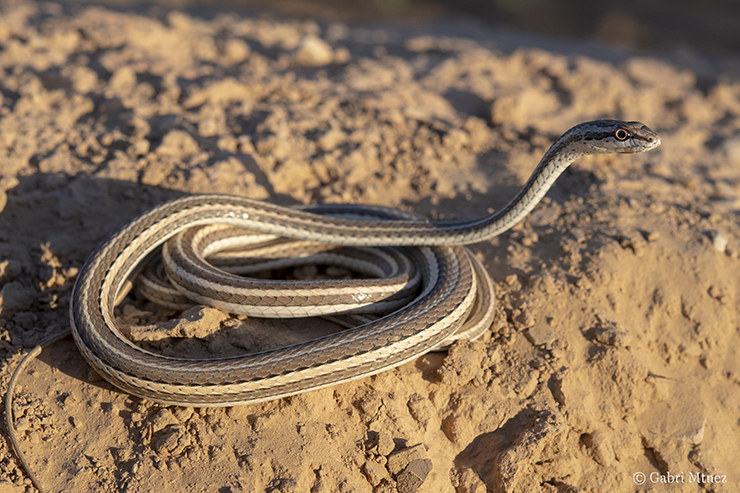
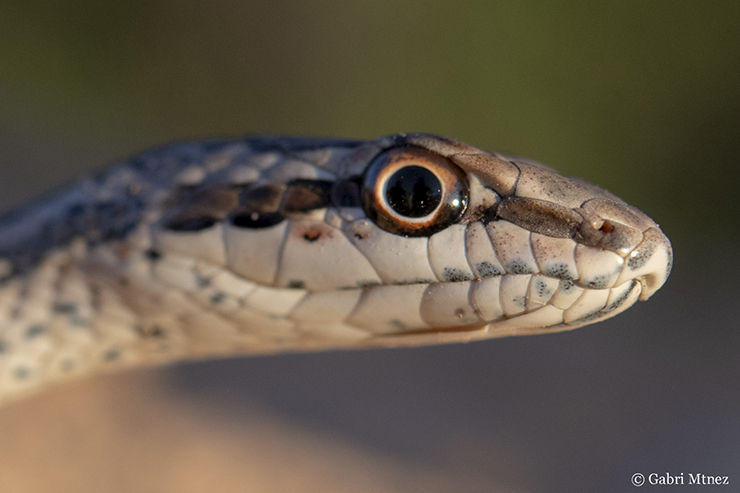
The night began and we were ready to action. We visited a spot with water and many rocks and with the sound of the calls of the Sclerophys mauritanicus and Pelophylax saharicus males in the back we could find a dead Psammophis schokari in strange circumstances, many Tarentola mauritanica, a Chameleo chamaeleon and 3 Echis pyramidum leucogaster. According to Arnold and collaborators (2009) the genetic distance between samples of Mauritania (leucogaster) and Egypt (pyramidum) is very low, and this together with some specimens of eastern Africa with white venter (“leuco-gaster”), suggest the idea of a unique species in Africa. In the map of these authors (based in previous works), the Tunisian specimens appear as E. pyramidum pyramidum. Another work of the same year used samples of Bou Hedma, and surprisingly, they appear in the ”leucogaster” clade, closer to the Morocco samples than with the Egypt ones-“pyramidum” clade (Pook et al., 2009). So, the Tunisia specimens must be considered Echis leucogaster or Echis pyramidum leucogaster. When we finished the night and we were ready to go for sleeping appeared a fourth Echis, the largest of the night.

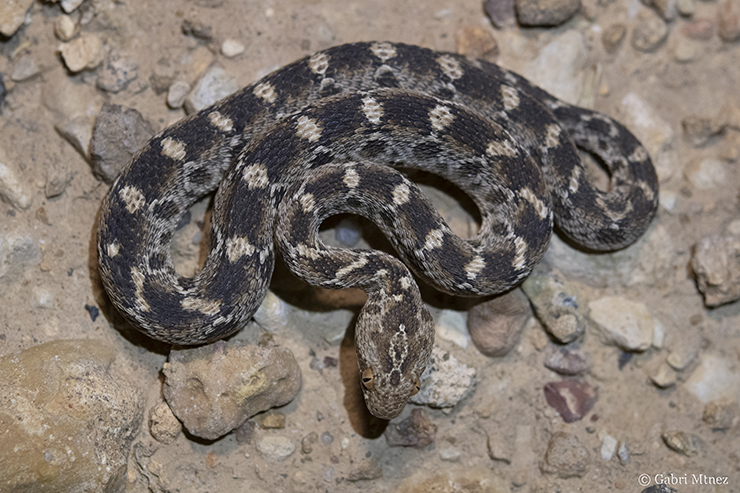

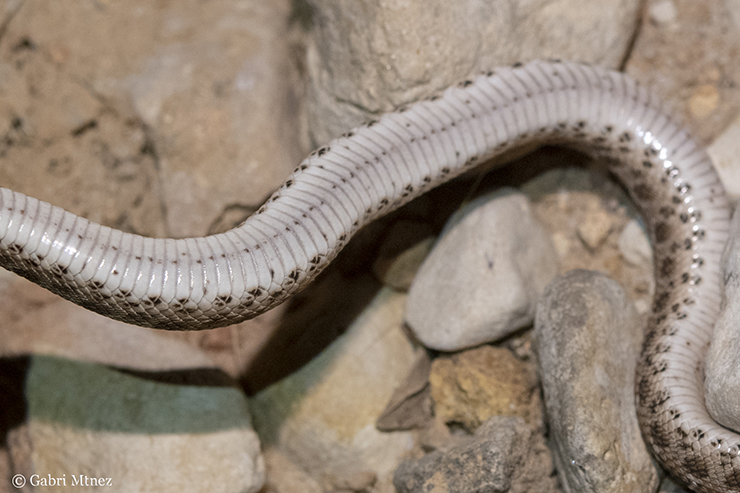
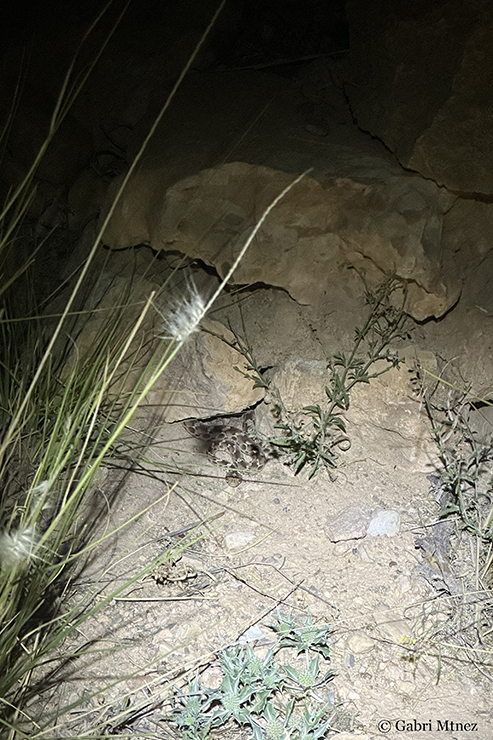

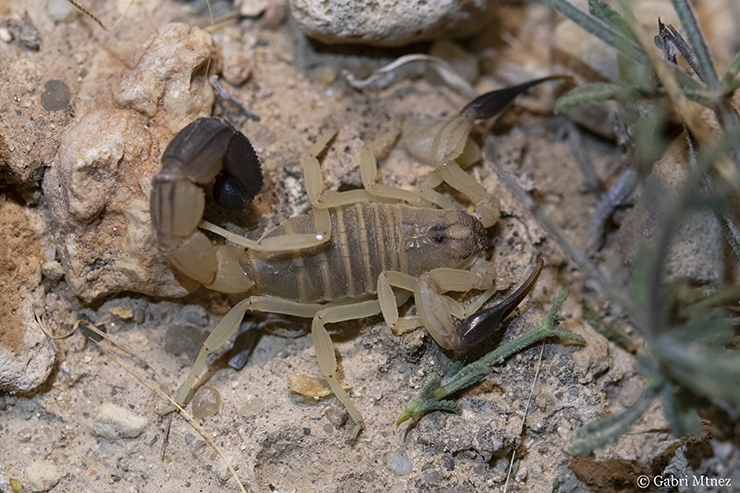
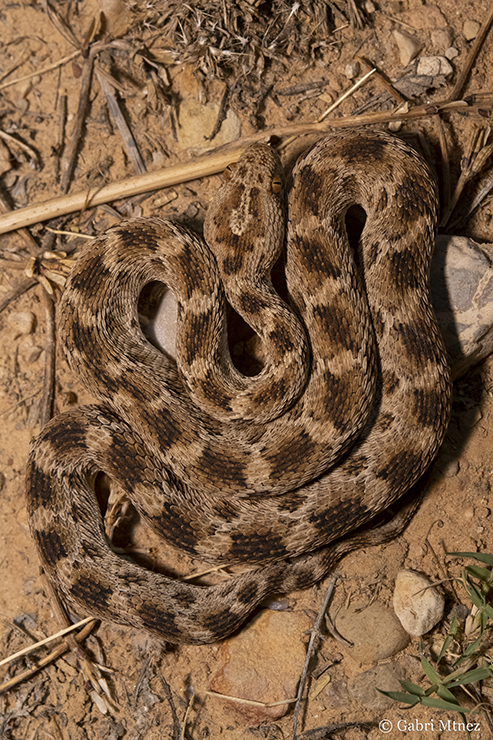
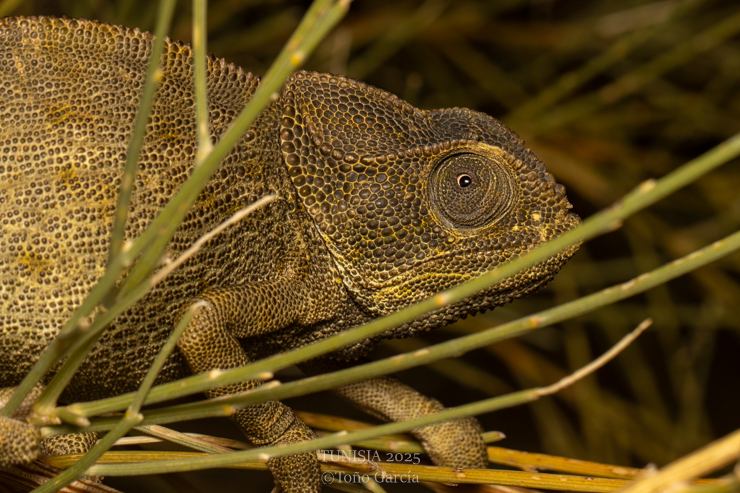
We took the dinner before sleeping. 2 Natrix astreptophora algerica, 6 Scincopus fasciatus and 4 Echis in Tunisia made our trip perfect. We were ready to go to the Sahara to find a Cerastes for Toño.
DAY 6
We drove to the south, and before crossing the Chott, we stopped in a rocky hill where we saw a dead on road Cerastes cerastes. A group of mammals jumped in the rocks and disappeared in the cracks (they looked Ctenodactylus gundi). Alberto and Toño saw agamids that they identified as “Agama”. However, there is no Agama species in Tunisia so we don´t know if these were Uromastyx acanthinura or Trapelus mutabilis. Flipping we found Tropiocolotes tripolitanus.
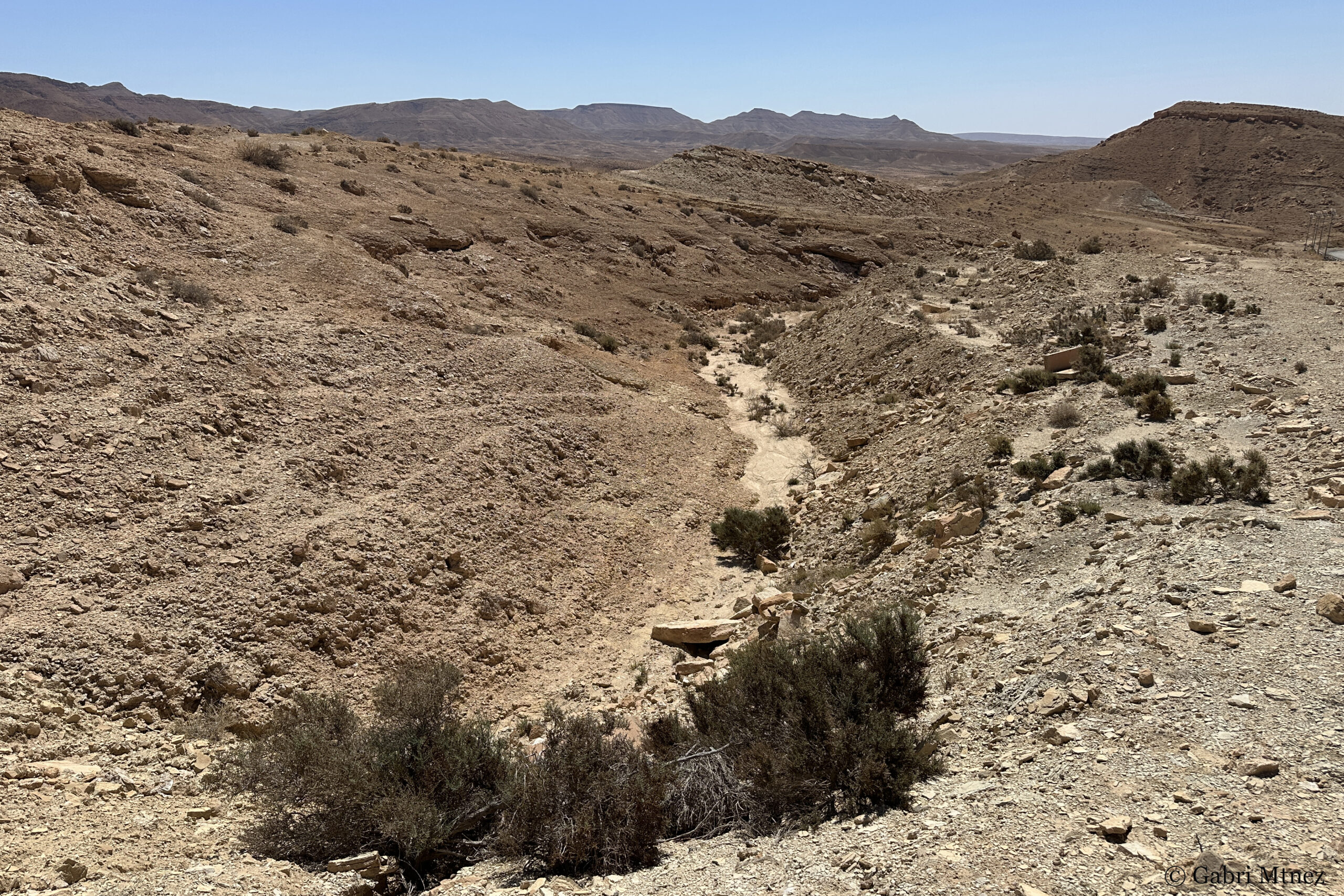

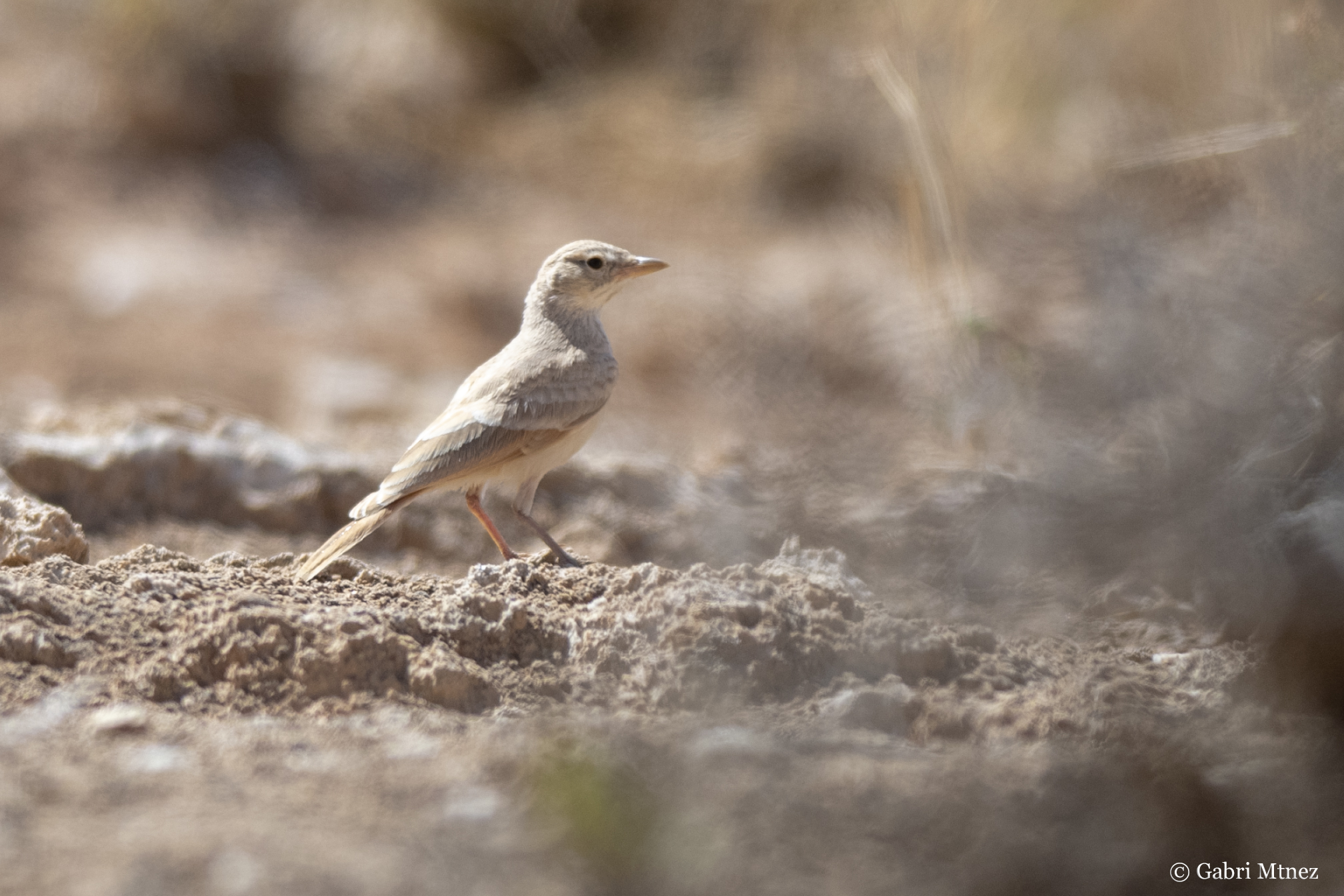
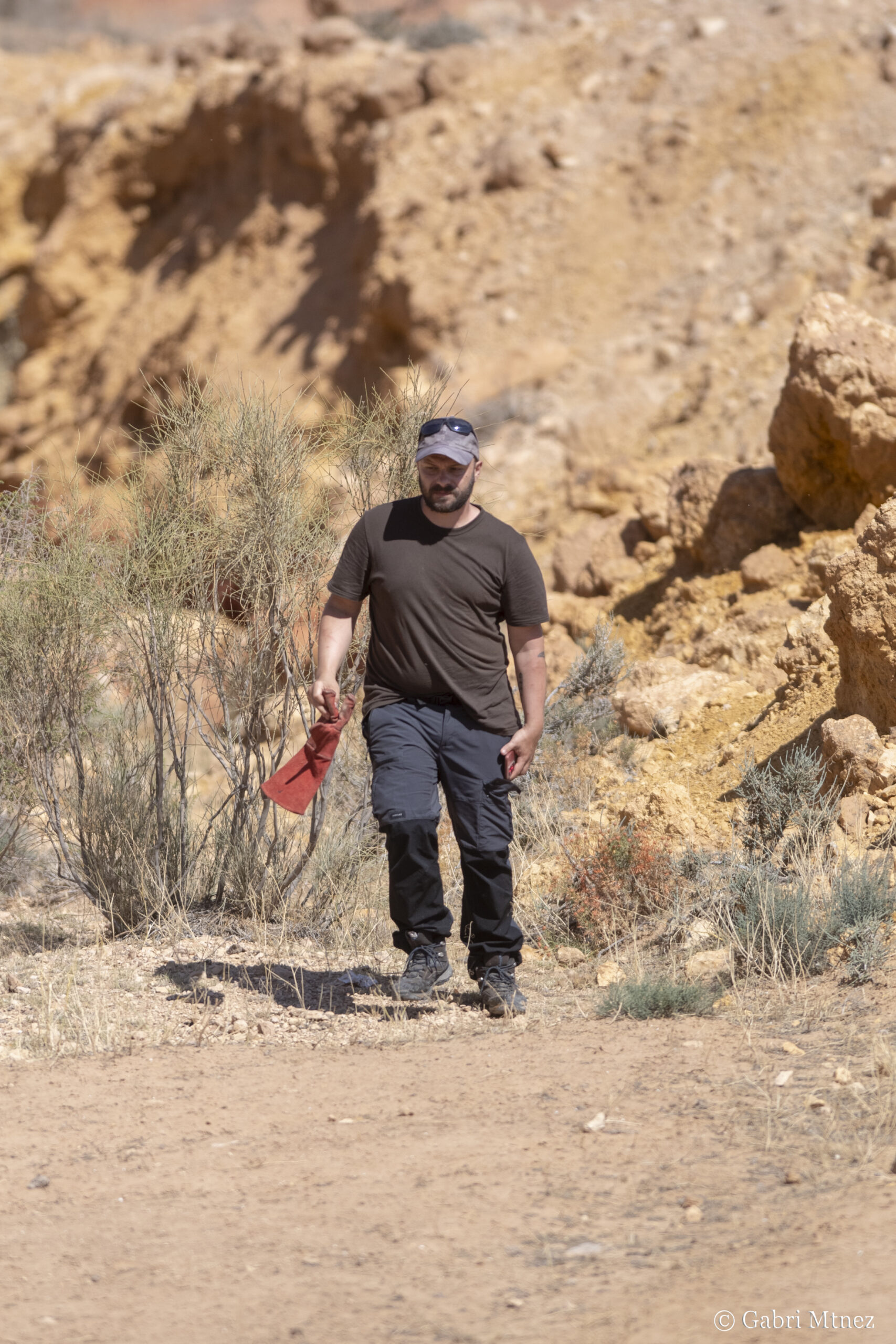



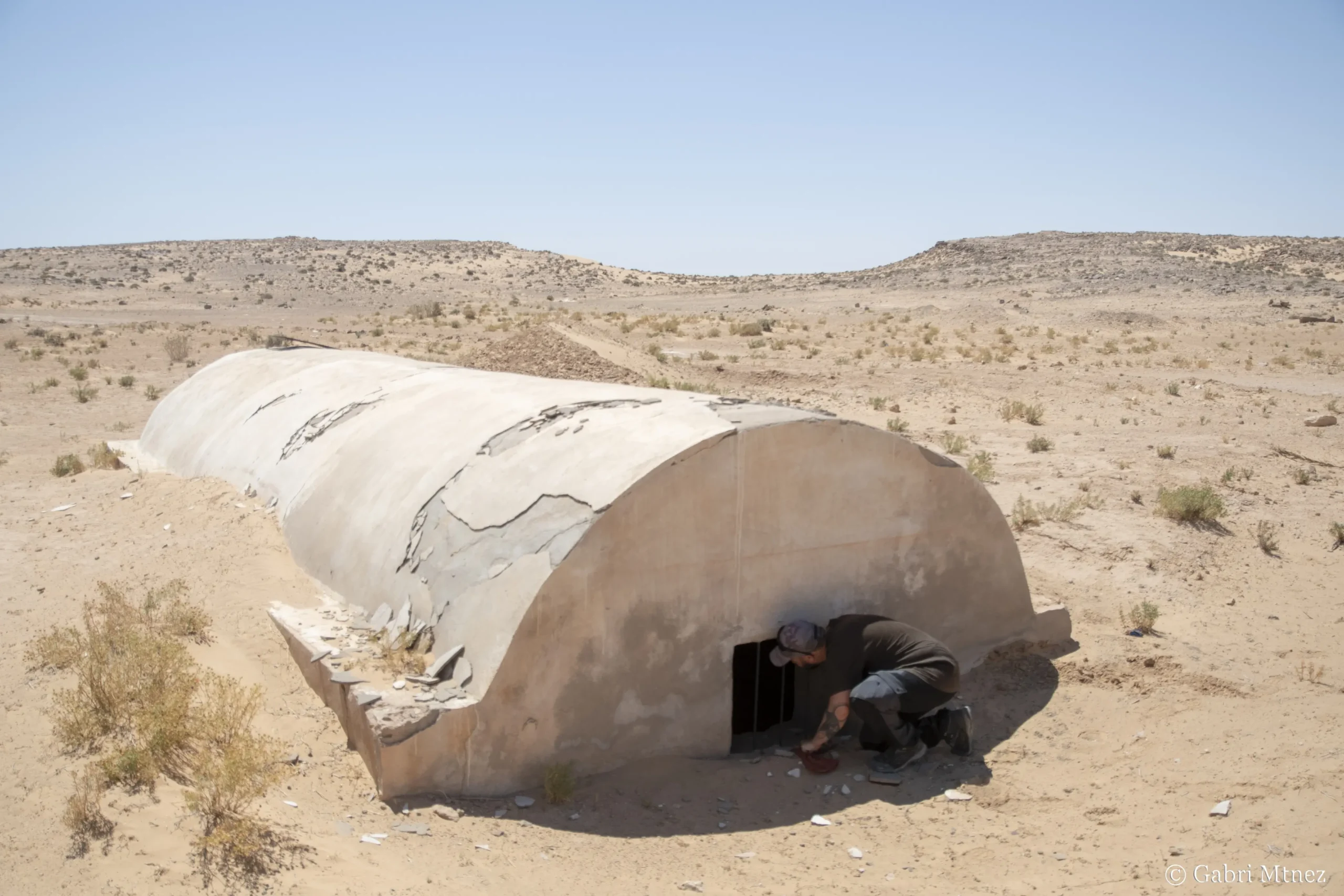

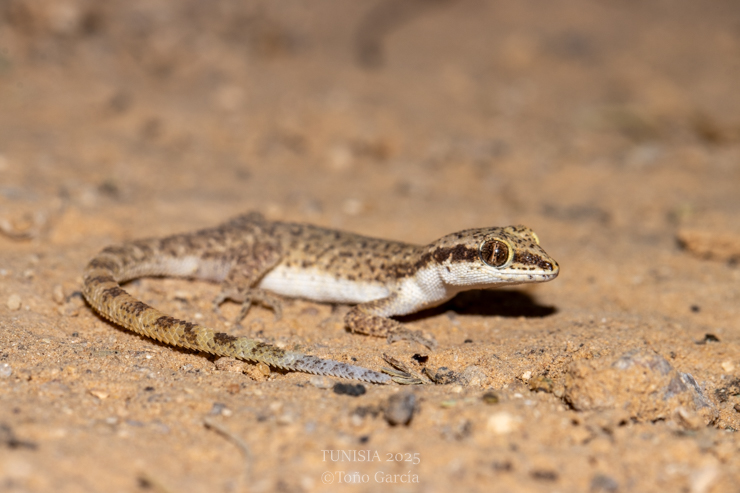

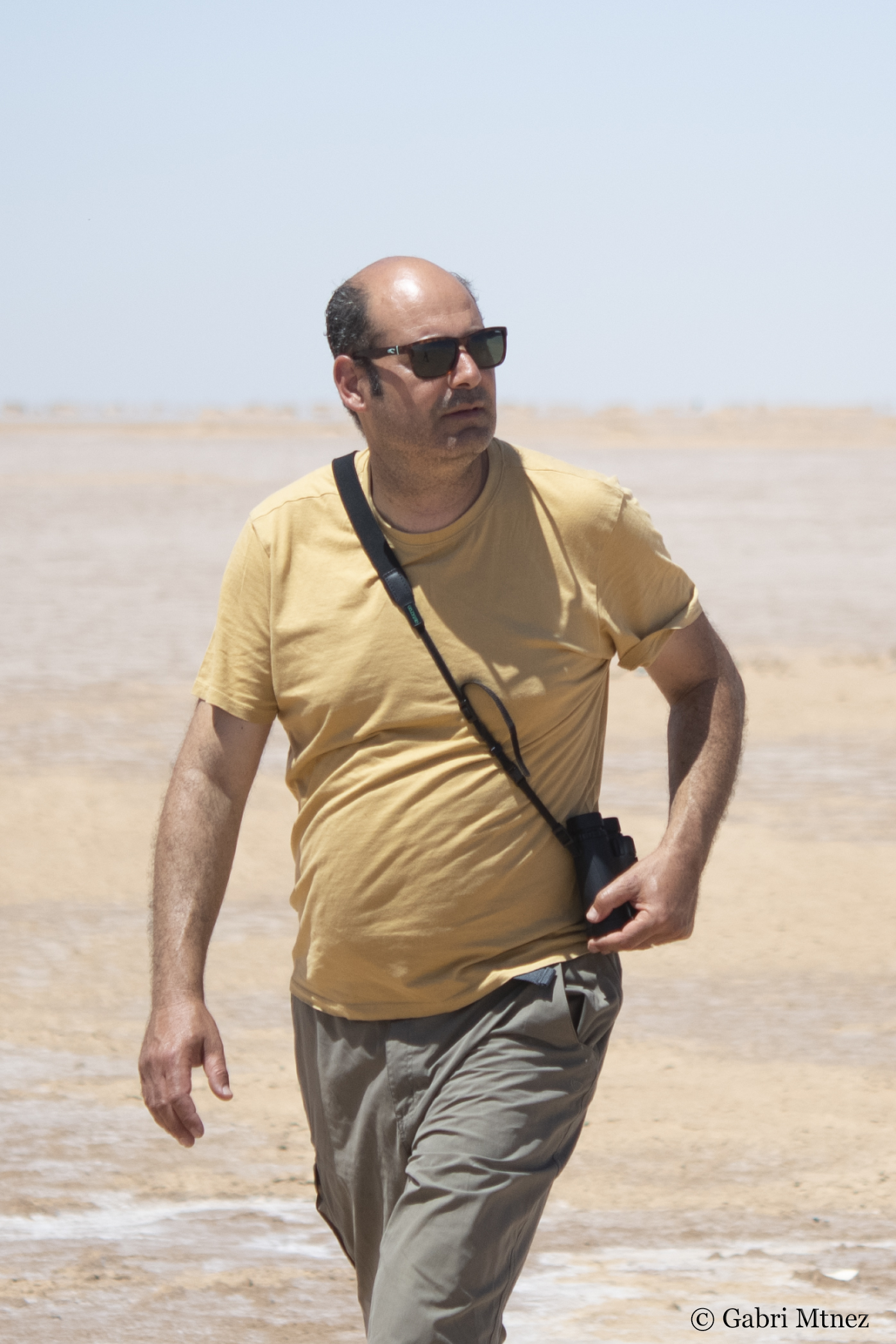


After the Chott, we entered in a typical reg habitat. Big steppes of rocks. Flipping we could see the first Chalcides boulengeri and Trapelus mutabilis of the trip, and a Stenodactylus mauritanicus.
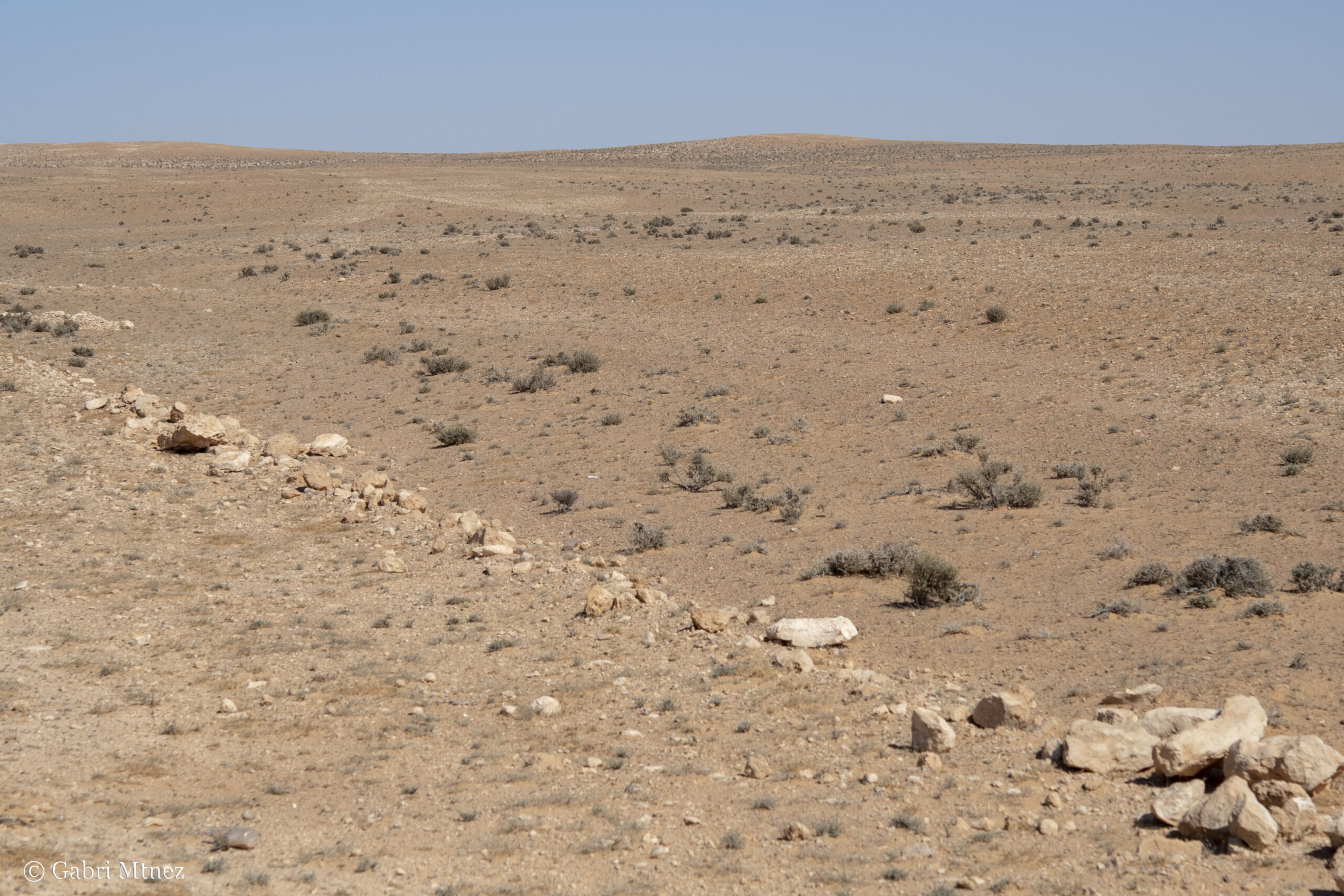
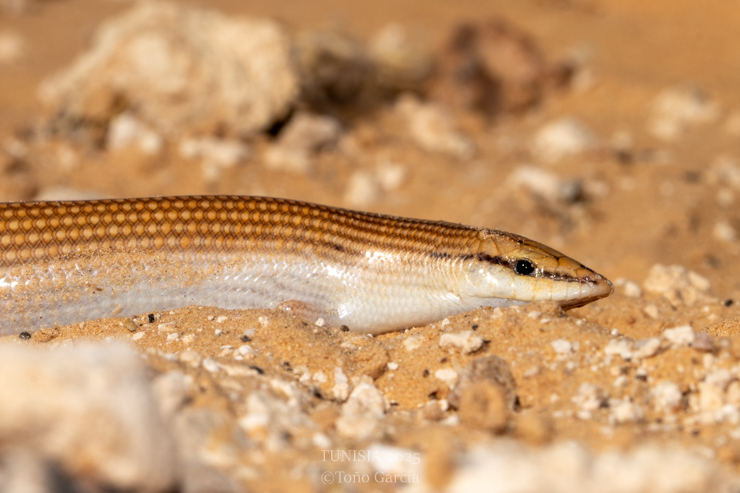
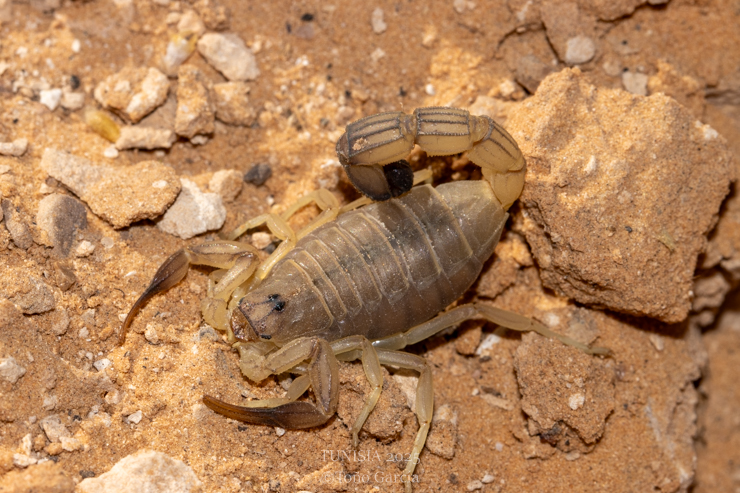
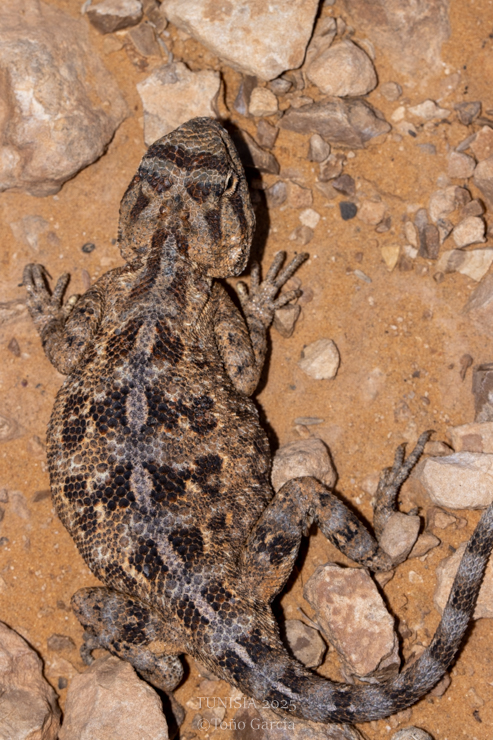
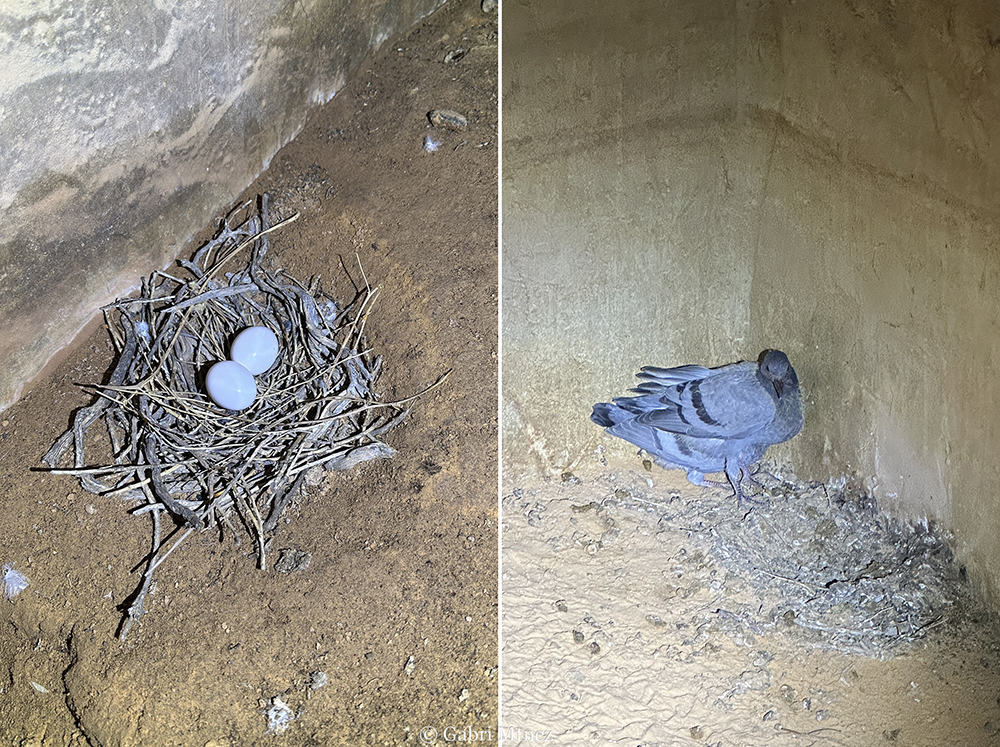
We checked some HICROW and we could find two juvenile snakes: Malpolon moilensis and Hemorrhois algirus algirus.
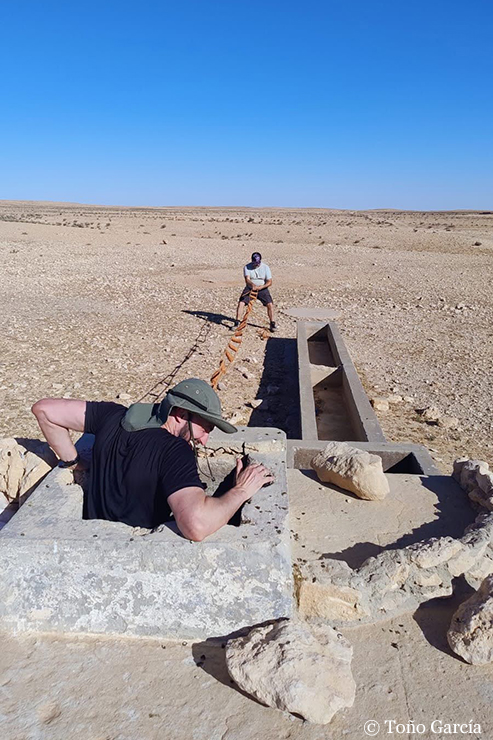


Finally, we arrived to our sleeping place in the sand dunes of Ksar Guilane. It was already night when we began the expedition there. The first animal was a Anthia sexmaculata, a classic of the sand dunes. The habitat looked amazing and there were plenty of Acanthodactylus tracks. Strange that after 3 hours we just saw few Stenodactylus petrii, but not a single snake track. When I was with Toño far of the houses, appeared a motorcycle in the middle of nowhere and drove directly to us. He was surprised about our presence and showed us in the phone a photo handling a dead Varanus griseus. We returned to the sleeping place and found more people walking at night in the dunes without shoes. Very crazy considering that in normal circumstances it could be possible to see vipers semi buried that can bite them. In the village there was a Tarentola neglecta.
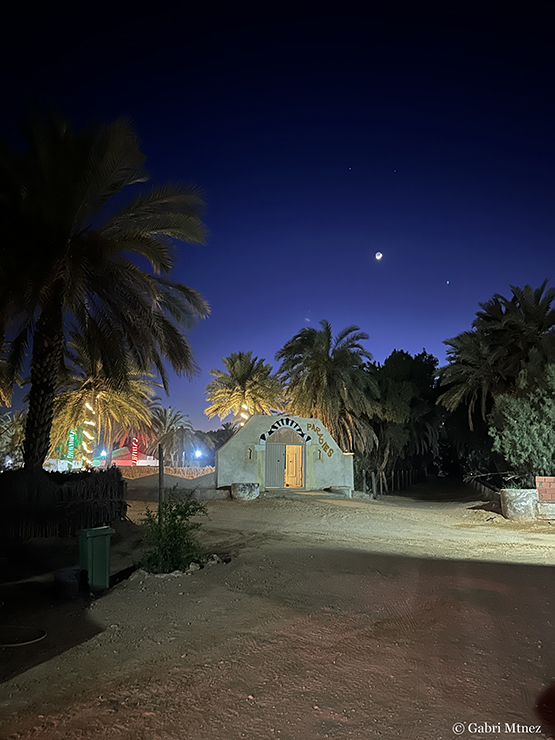
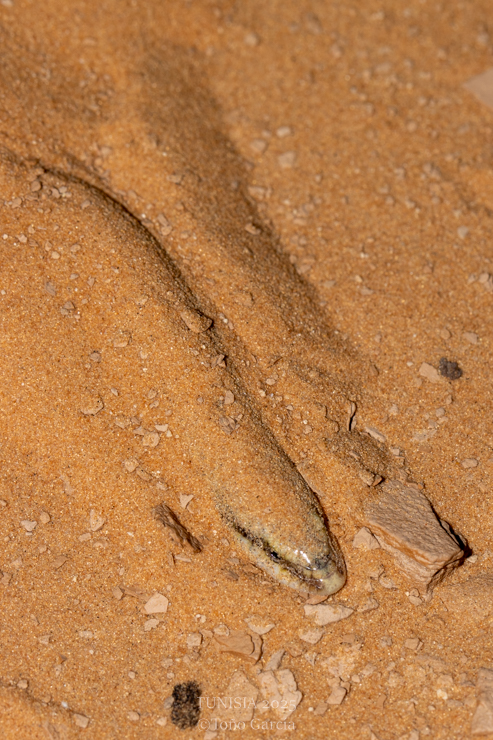
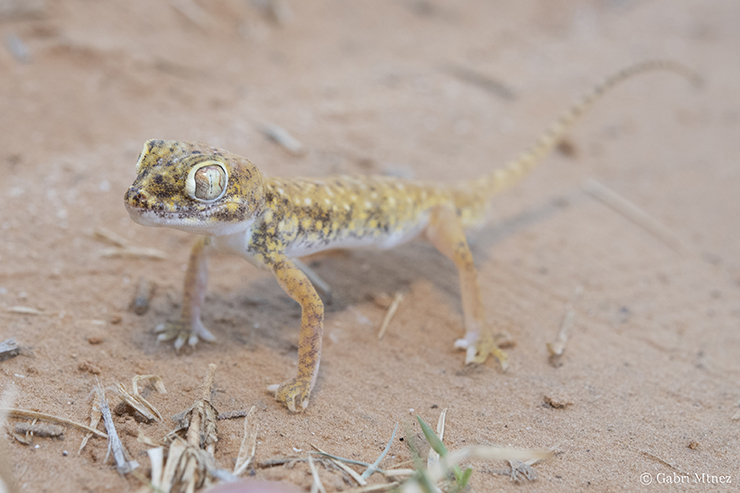
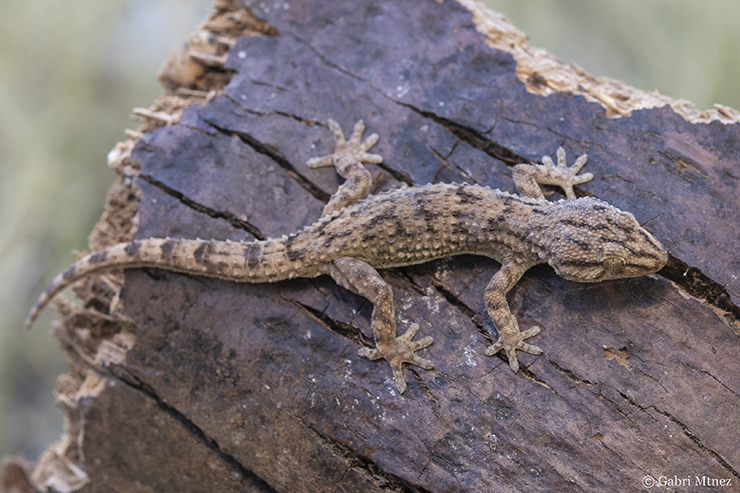
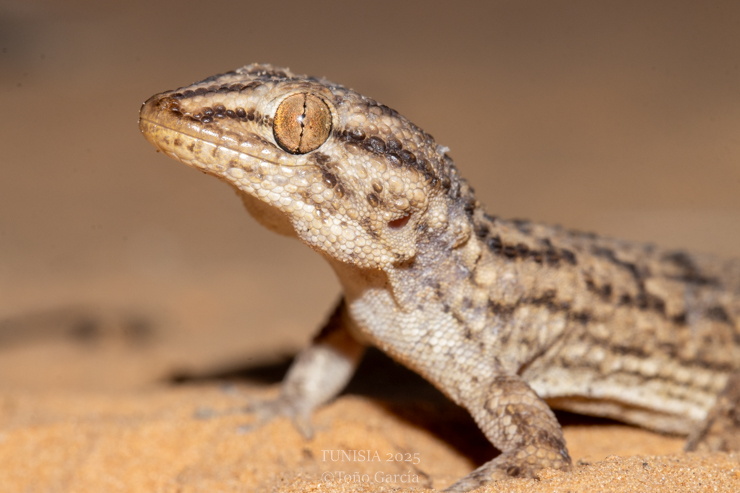
DAY 7
Very sad after a very weird night in amazing habitat with 0 snakes, we began to drive to the north again. In a sandy area with bushed we stopped and found plenty of tracks of animals (gerbils, invertebrates and Acanthodactylus) but no snakes. For any reason there was no snake activity that night. We could see some Tropicolotes tripolitanus, some Acanthodactylus scutellatus (including a male’s fight) and another Trapelus mutabilis.

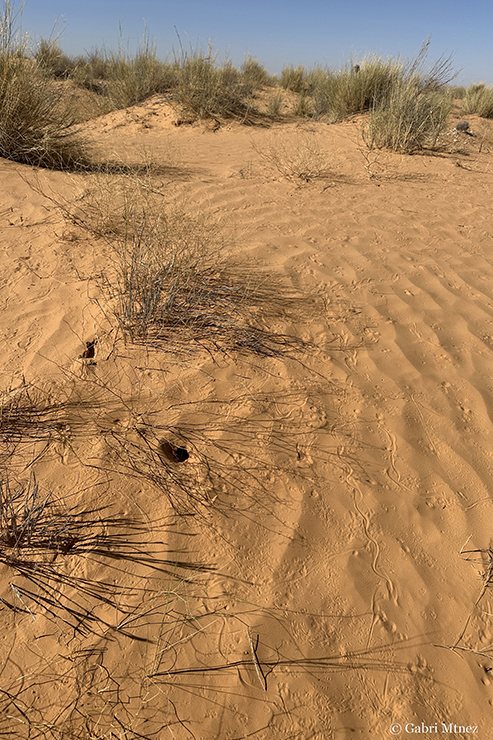
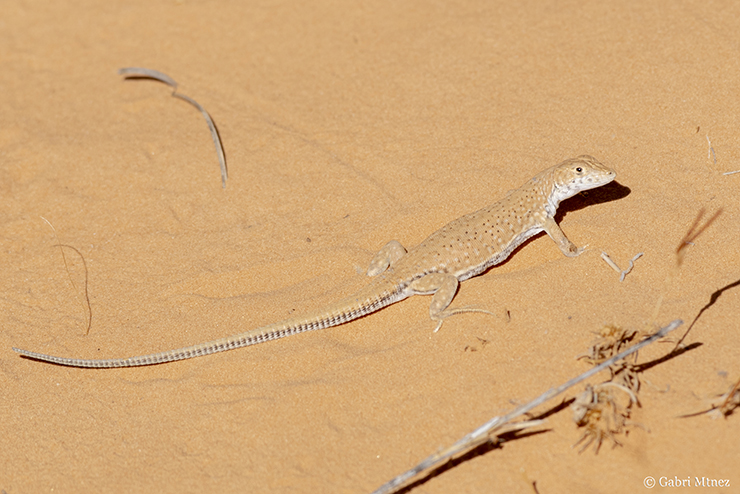
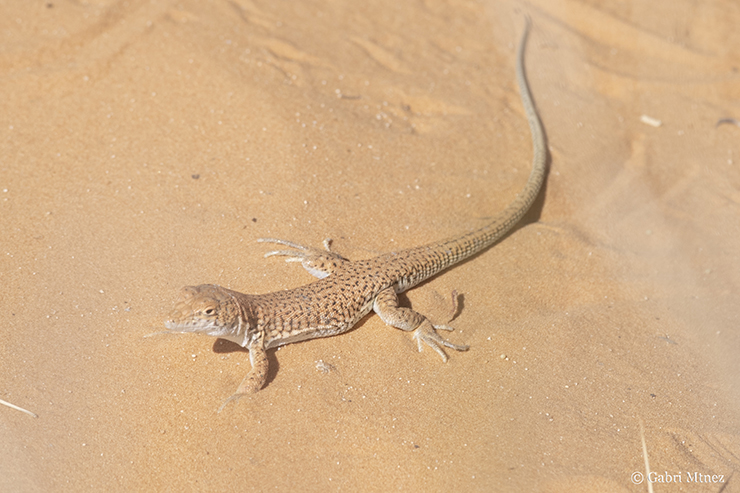
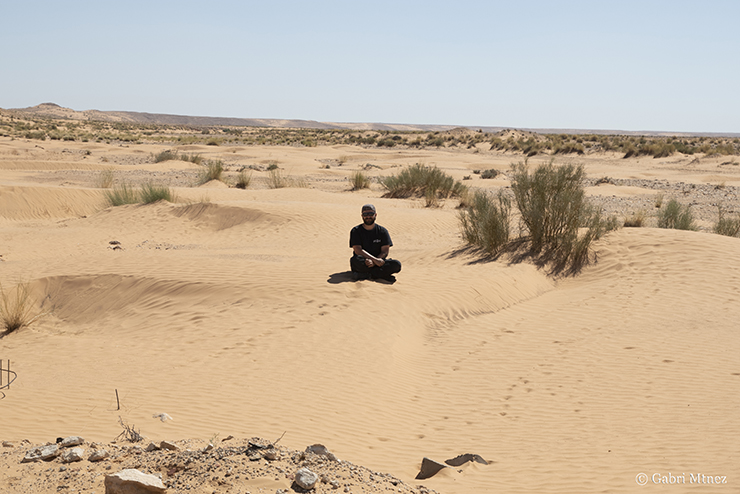

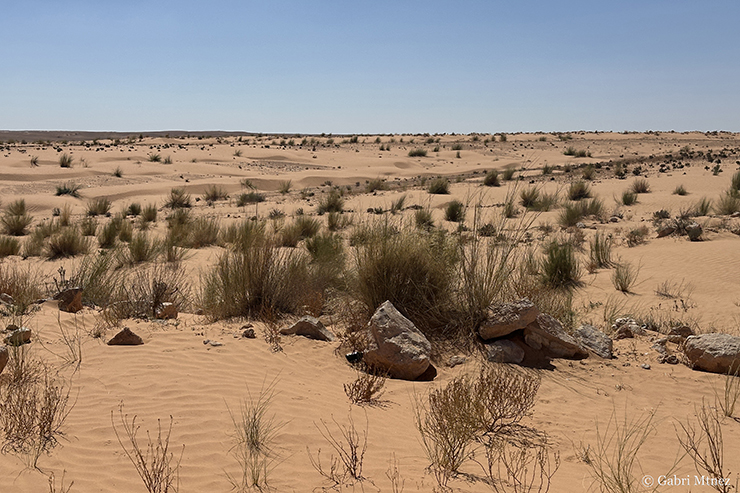
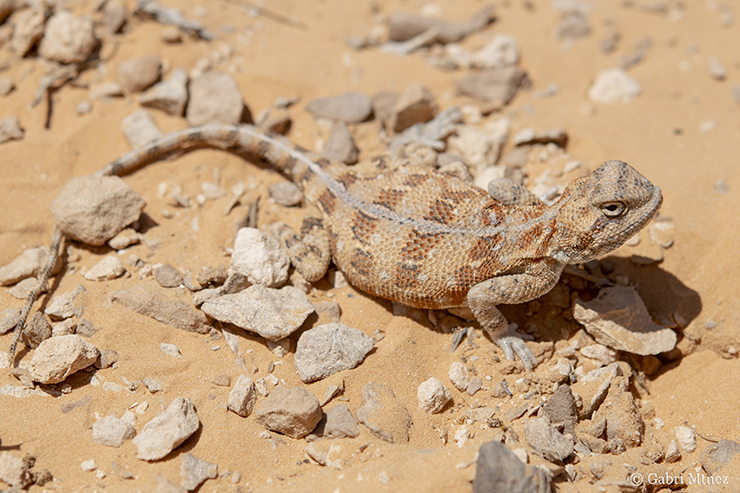
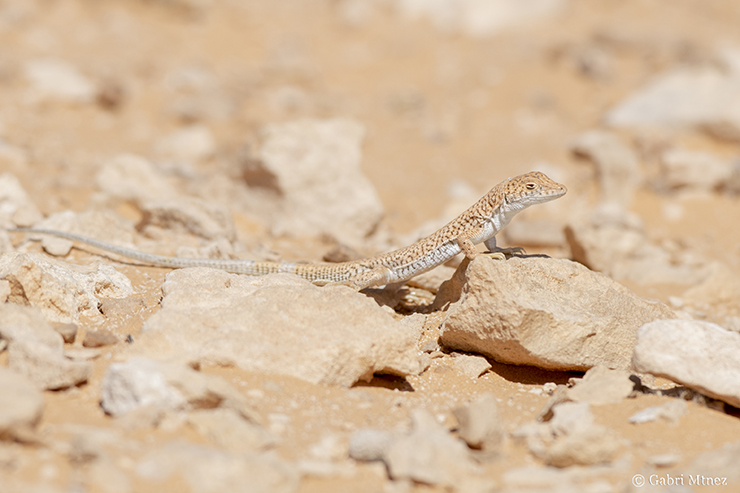
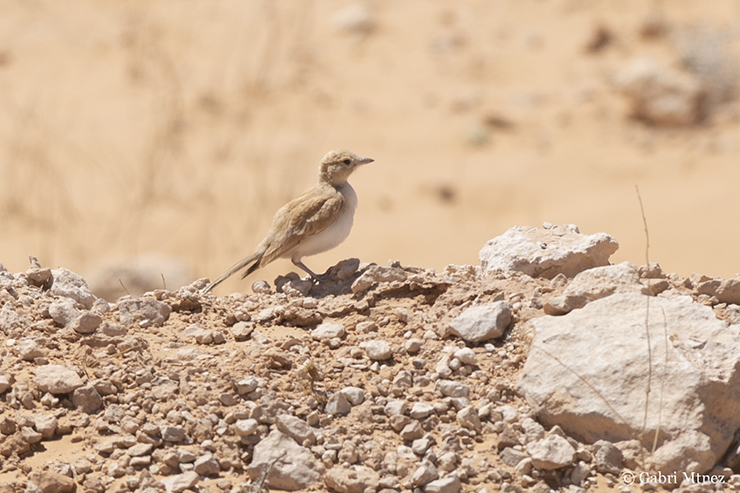
We began to check HICROW and very fast we saw an adult Varanus griseus drowned. It was a very bad news and we were very sad, and in few minutes in another HICROW we saw a dead Uromastyx acanthinura. It was frustrating because in the Moroccan Sahara and pre-Saharan areas you usually find many agamids in the top of the rocks, and however, in Tunisia we didn´t find them.
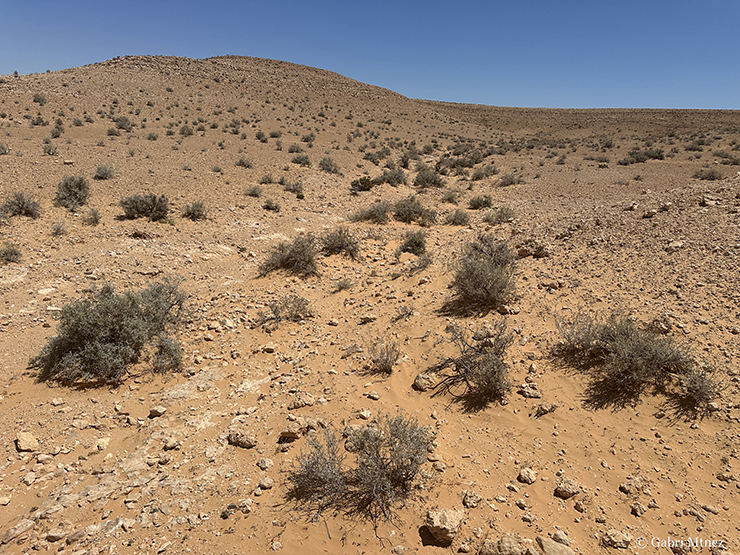



When we were very frustrated appeared in a HICROW an adult Varanus griseus alive. We were extremely happy, specially Toño and Alberto that they had never seen an alive one and the Desert Monitor is indeed one of the most iconic species of the Sahara Desert.
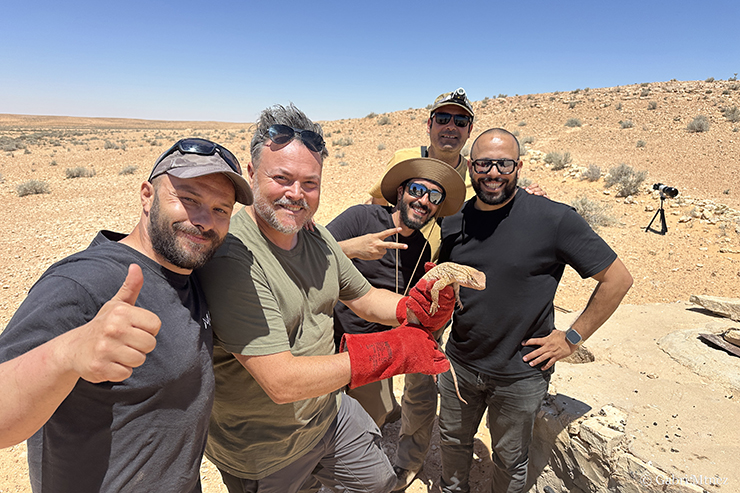
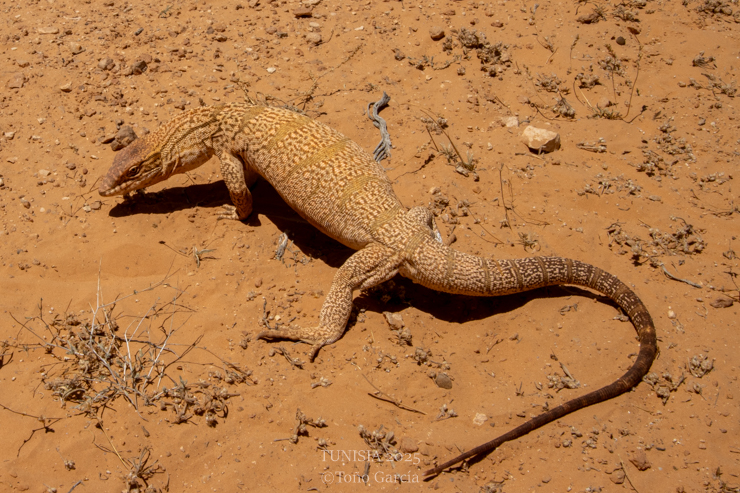
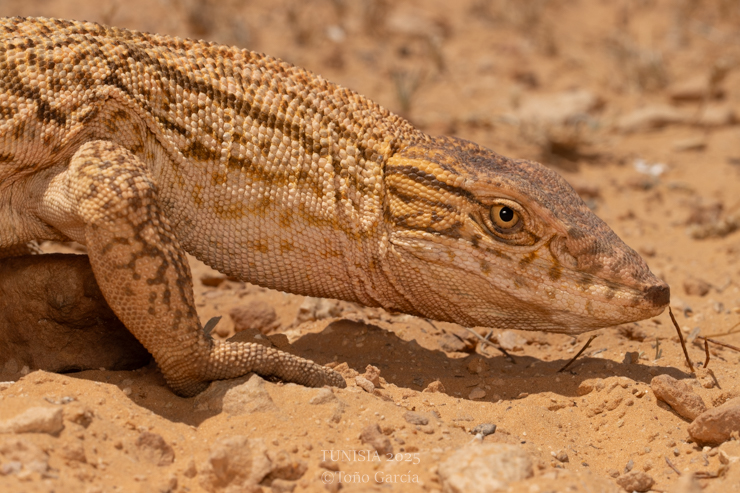
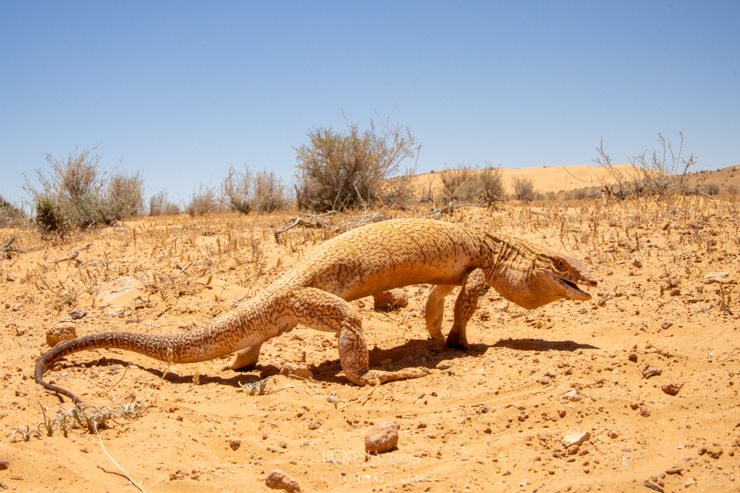
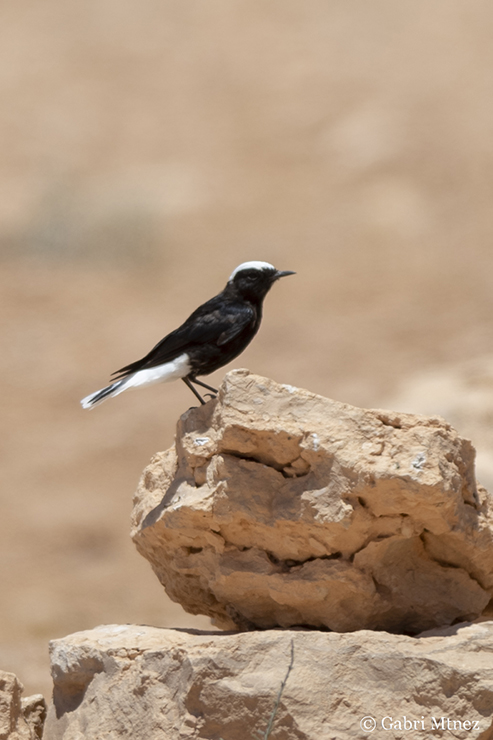
We expended the whole day checking HICROW and rescued several species: 2 Testudo graeca (1 alive + 1 dead), some Psammophis schokari, some amazing Hemorrhois algirus algirus, a nice young Spalerosophis diadema cliffordii and a big Malpolon moilensis. We visited the habitat of Cerastes boehmei (the horned phenotype of Cerastes vipera; Waldhauser et al., 2025) but we didn´t find tracks.
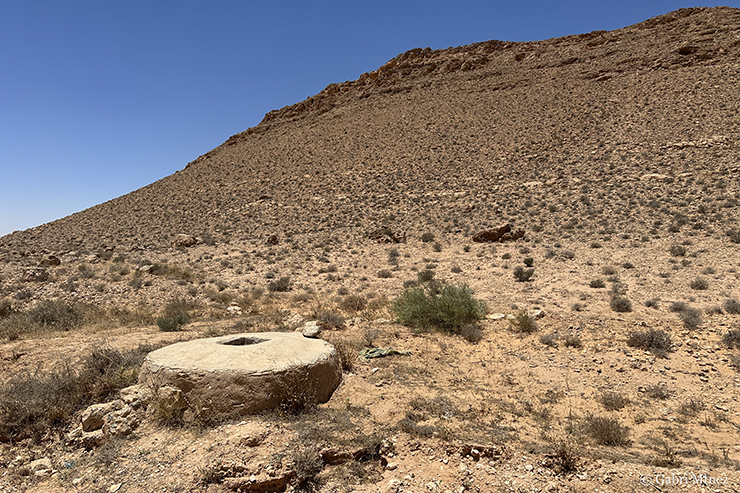
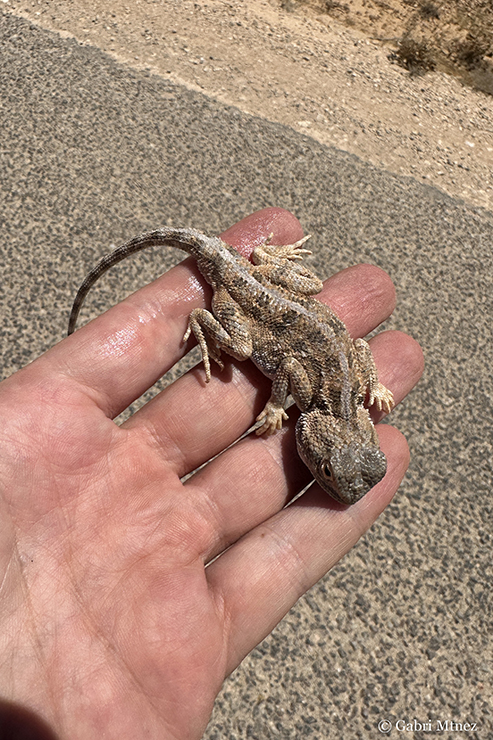
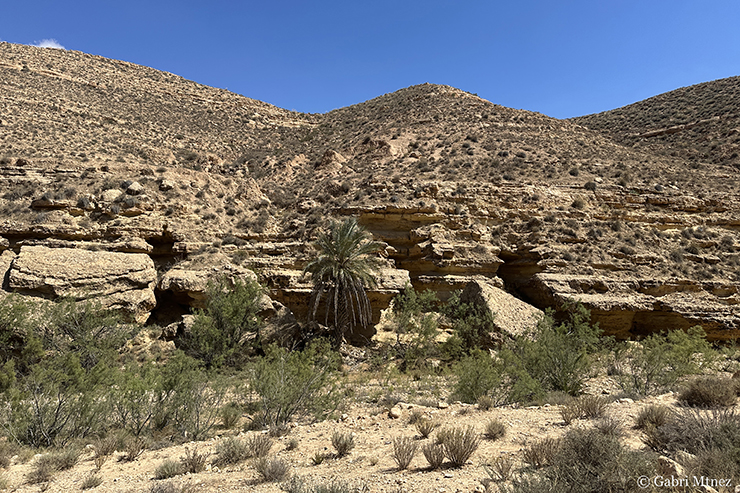
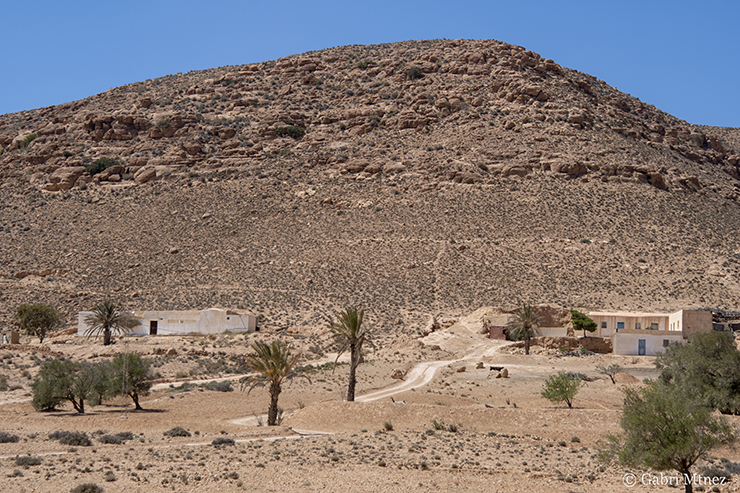
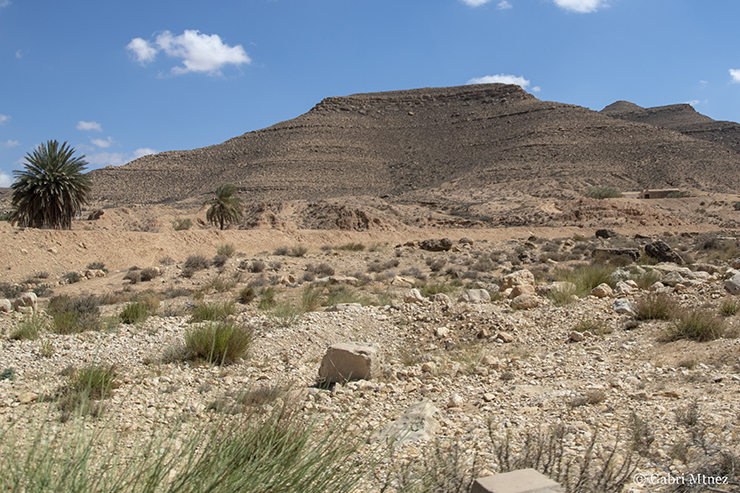
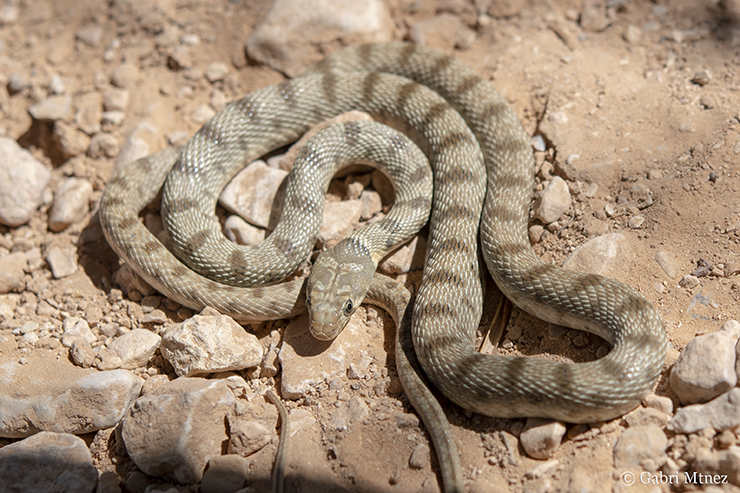
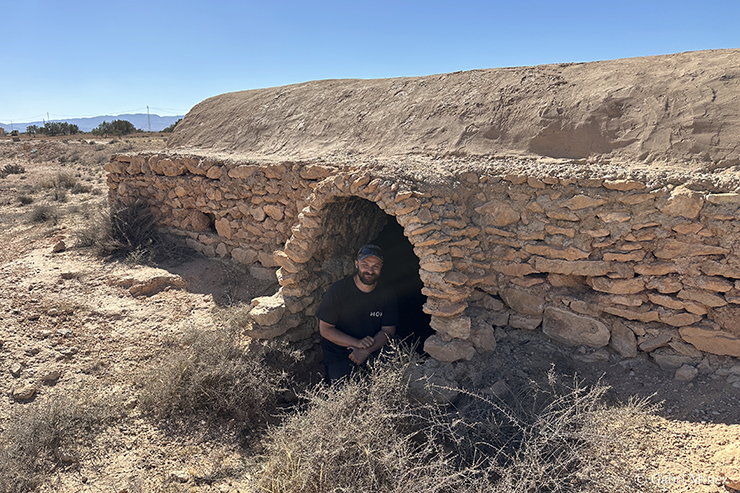

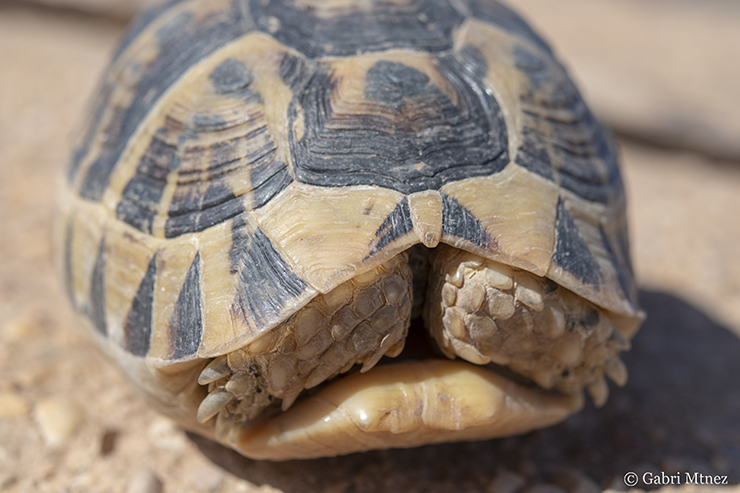
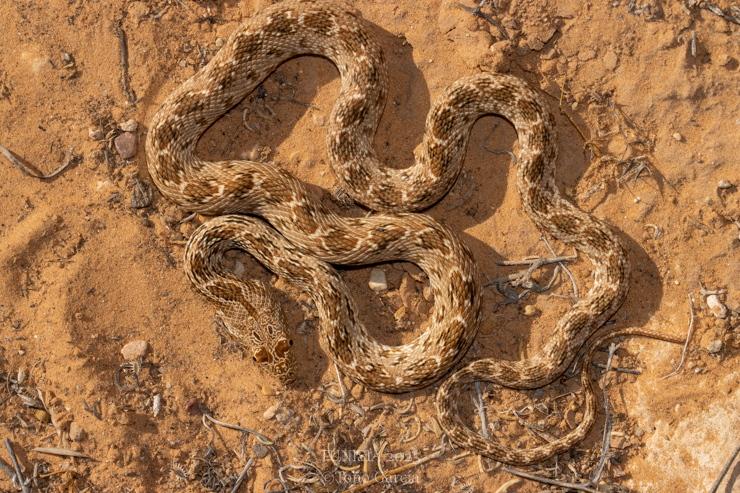
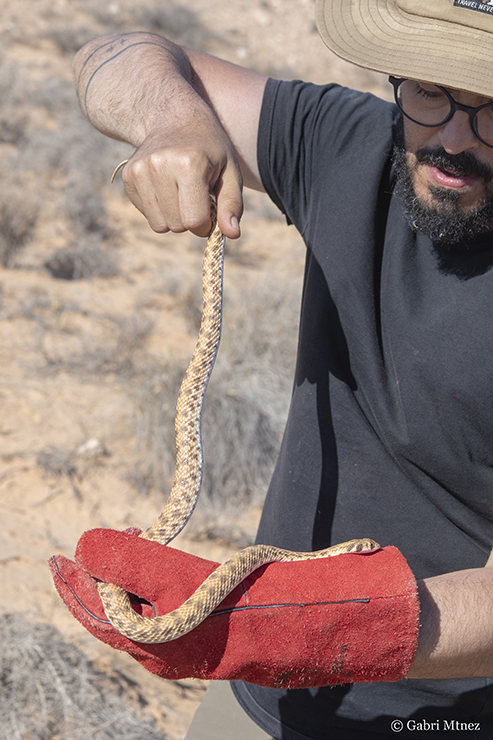
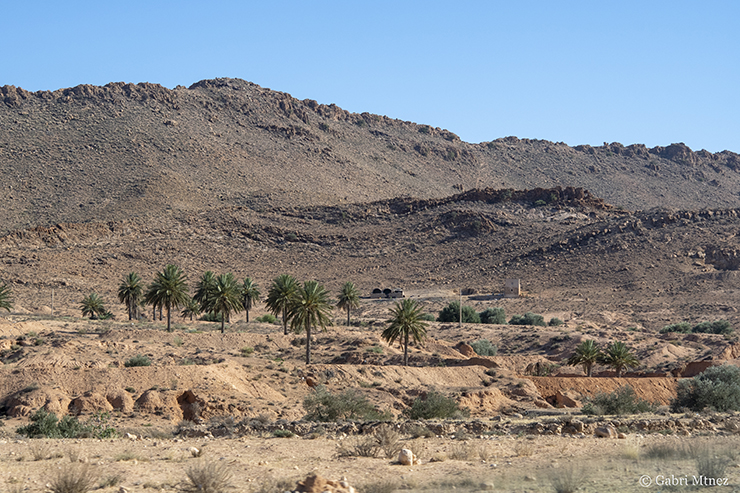
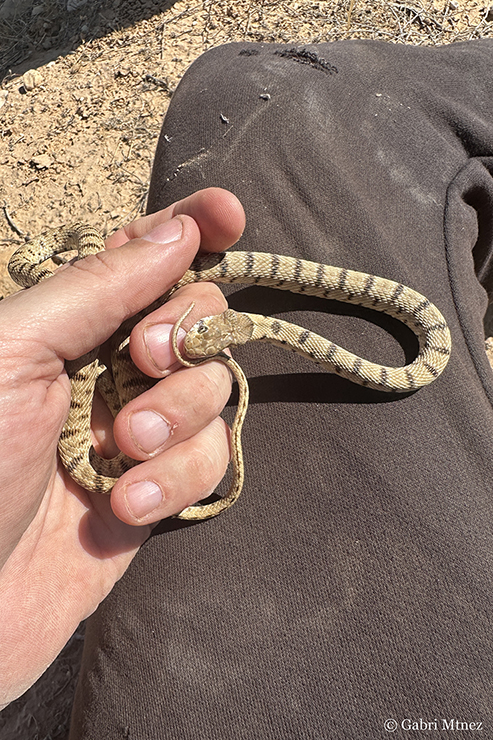
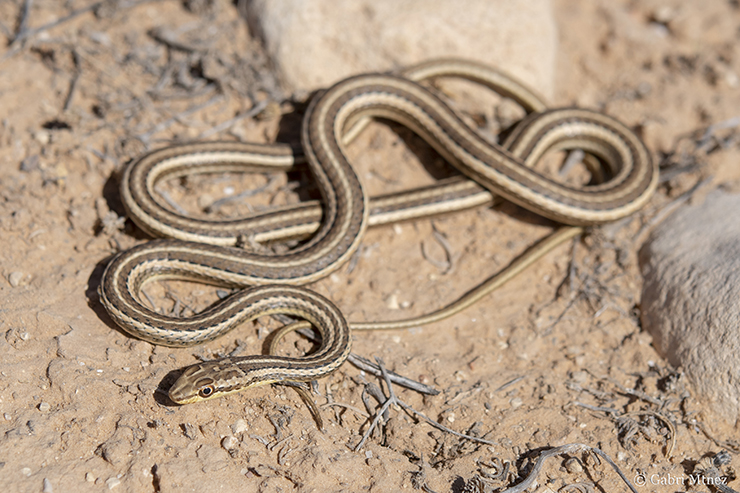
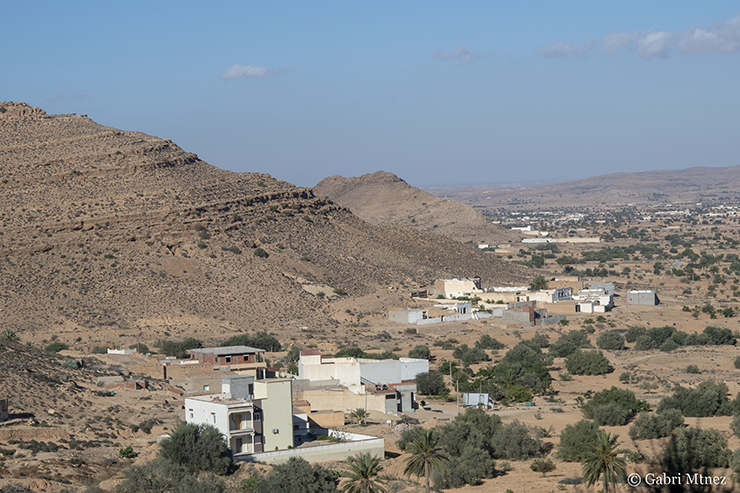
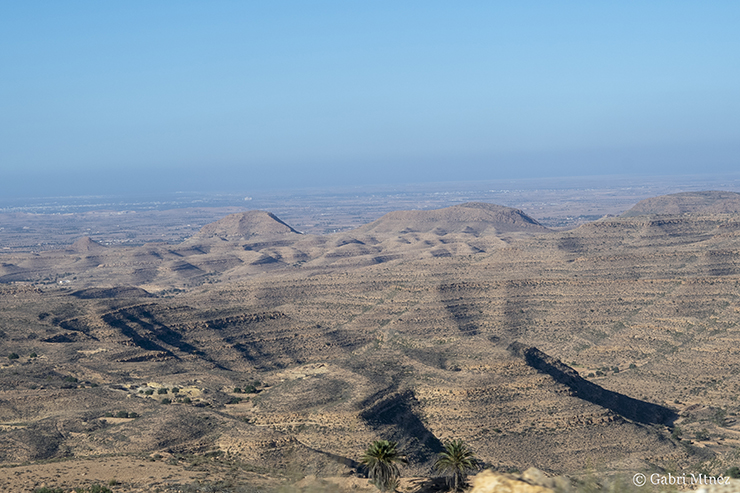
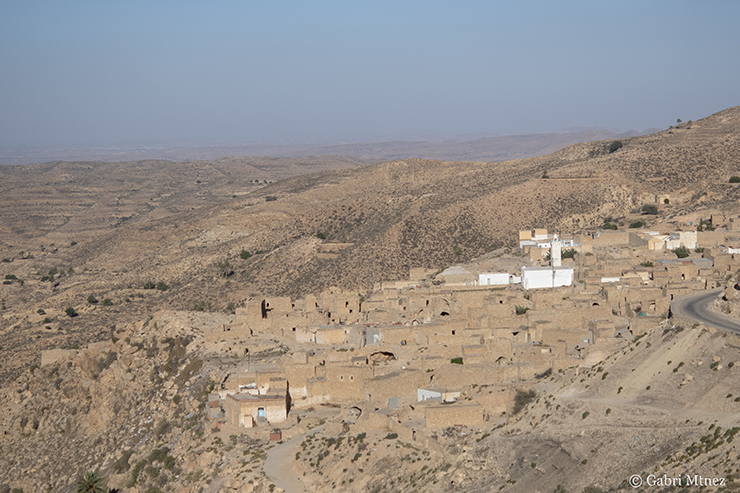

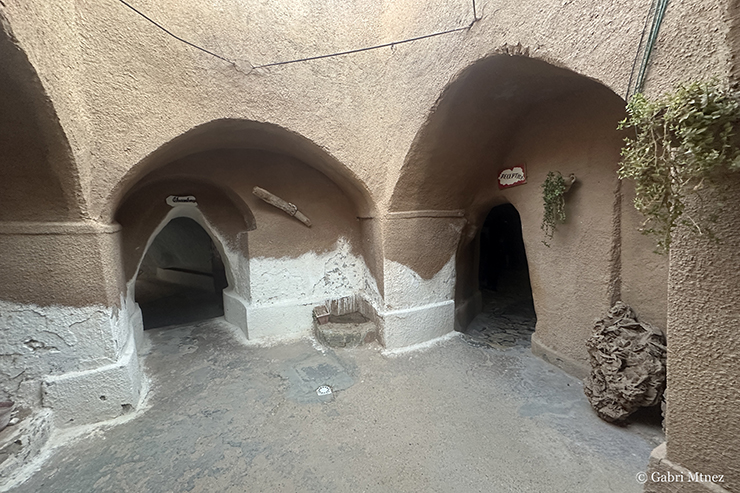
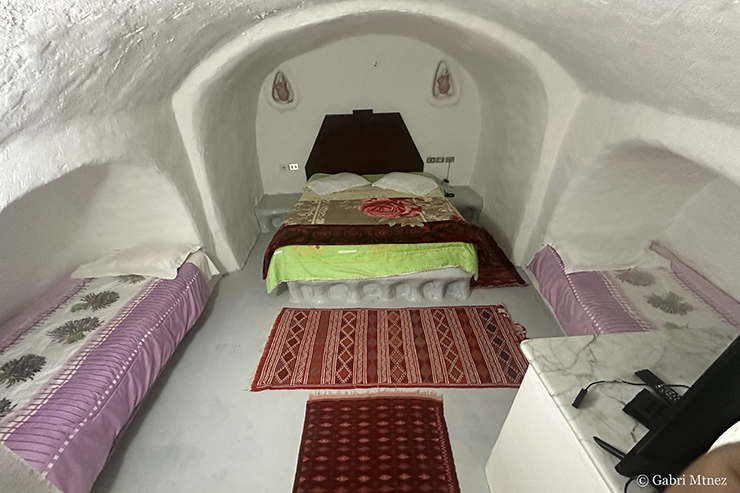
We arrived to our hotel, and left the things to be ready for another night in Cerastes habitat. Toño never had seen a Cerastes so we needed to find one, no matter the species. We visited a dry river with some sand and big bushes at the beginning of the night. After 30 minutes searching, we saw some Stenodactylus petrii and the first snake tracks. After some minutes following the tracks, we could see a nice greenish Lythorhynchus diadema. Some minutes later more snake tracks and another Lythorhynchus diadema, with a more typical reddish color. We were frustrated about the absence of Cerastes tracks, and in the rocky mountains to the hotel we saw a Stenodactylus mauritanicus and two fresh Cerastes cerastes dead on the road. Toño was sad but Alberto got some beers and we were happy again
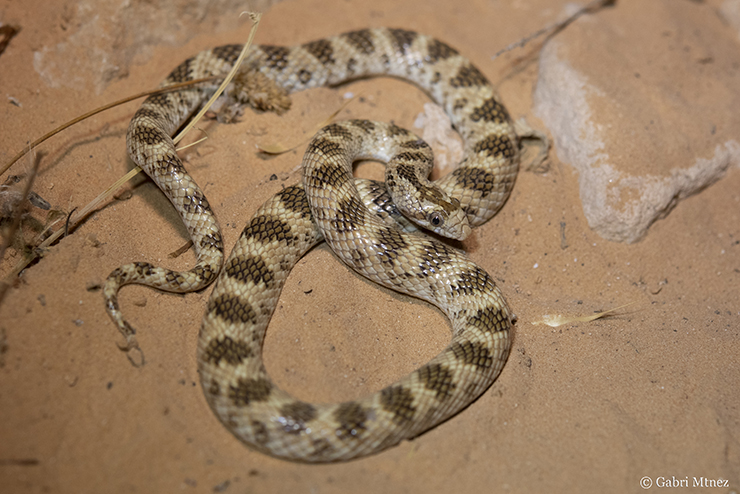
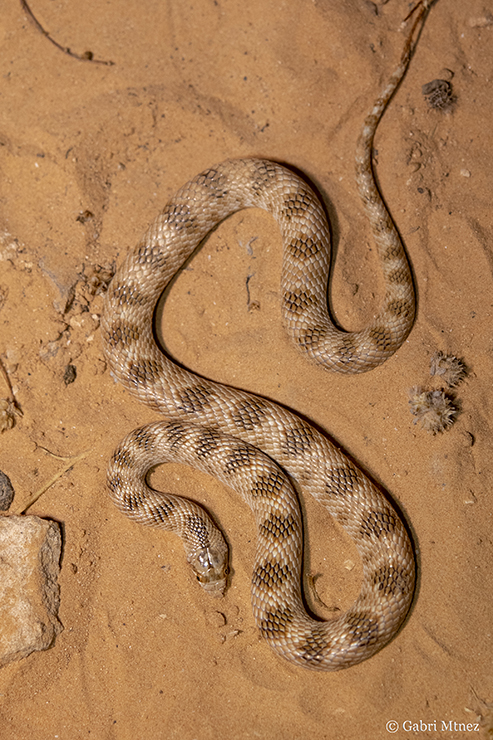
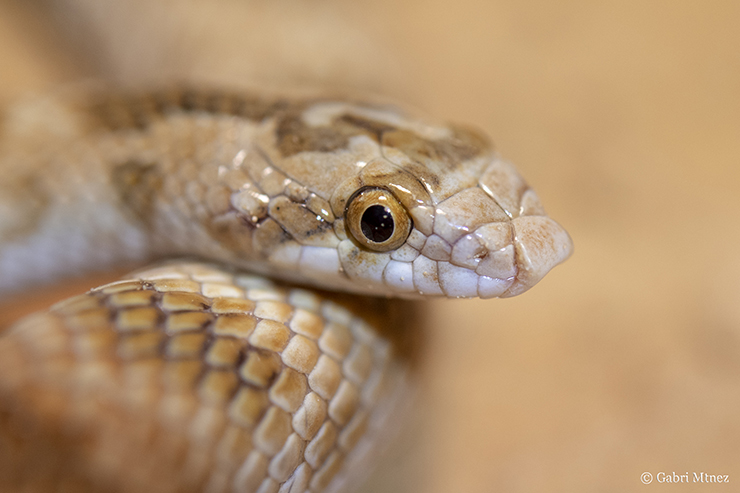
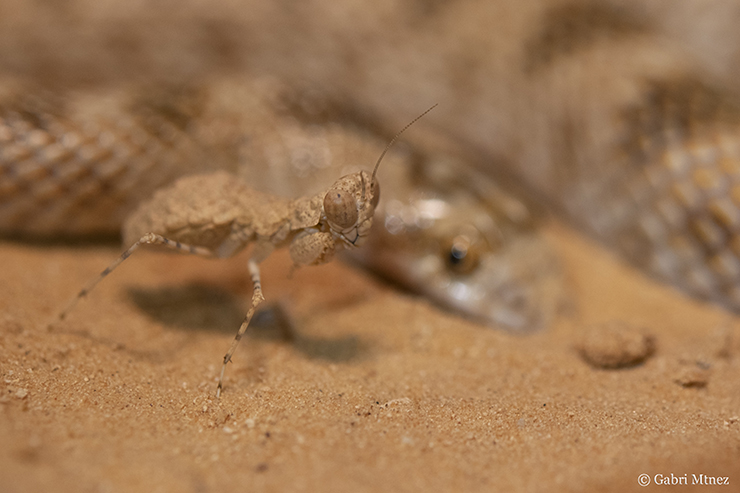
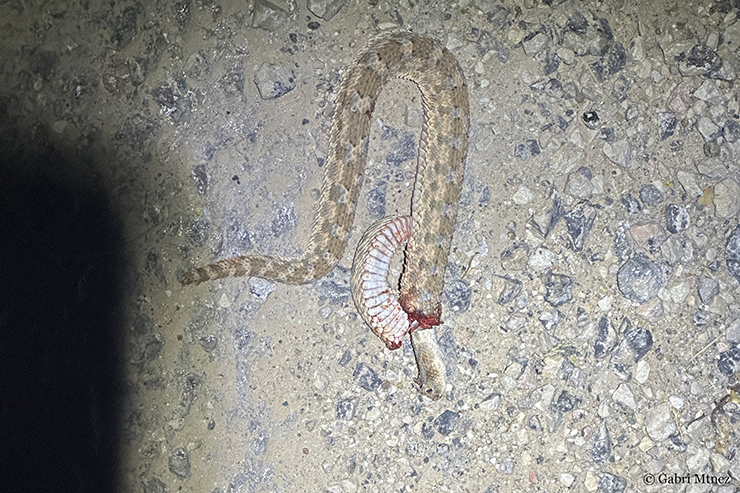
DAY 8
We woke up in our last day in Tunisia, and were ready for a long drive to Tunis capital thorough the coastal highway. We found a Mesalina guttulata under a rock and after 2 more Cerastes cerastes DOR of the previous night, in the 5th HICROW of the day we saw a juvenile Cerastes cerastes. Incredible the density of Cerastes cerastes in that rocky area apparently. We were extremely happy and few minutes later we saw a young adult much nicer, with grey-bluish marks in the dorsal area and head.
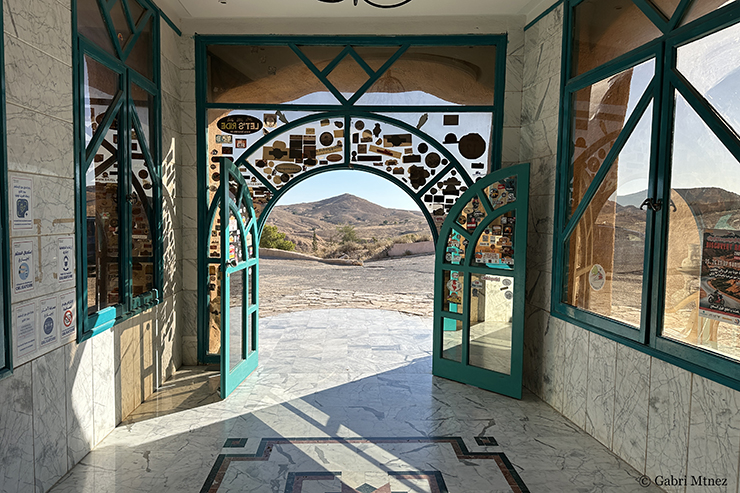
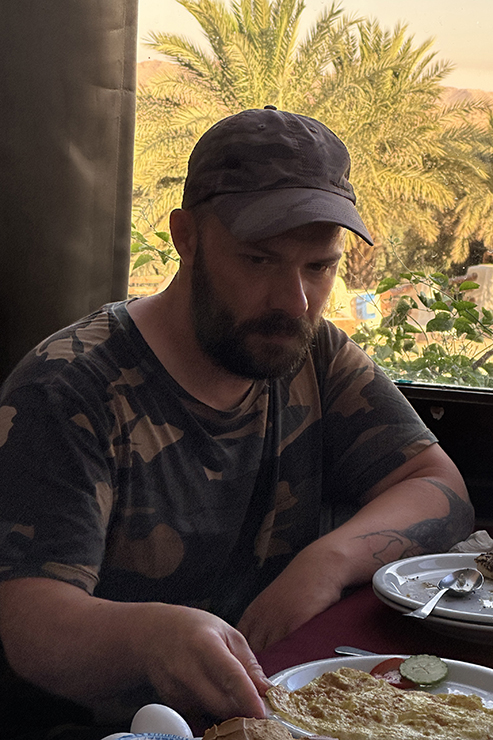
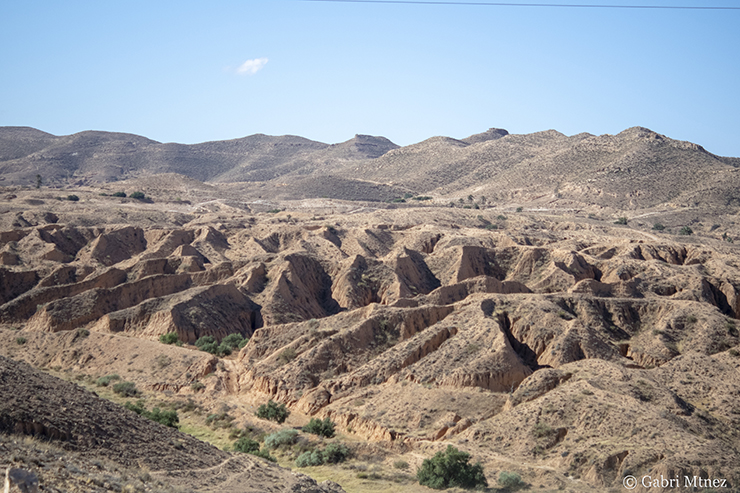
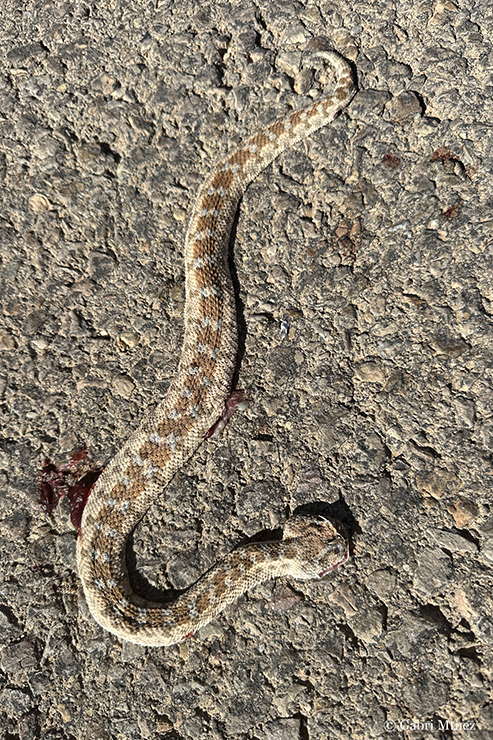
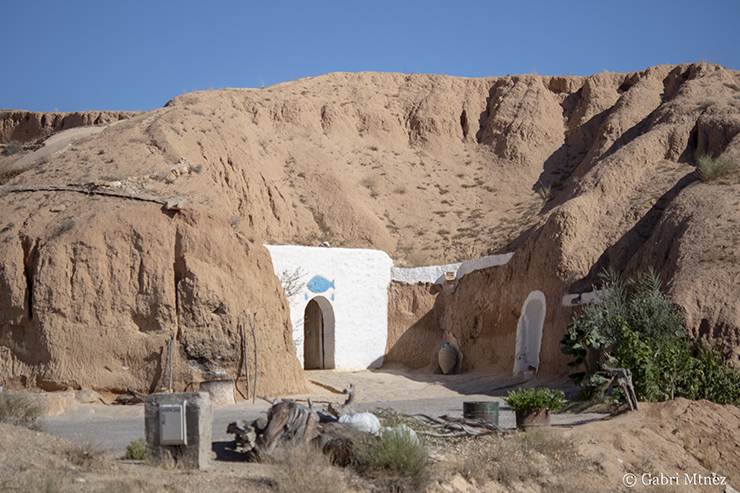
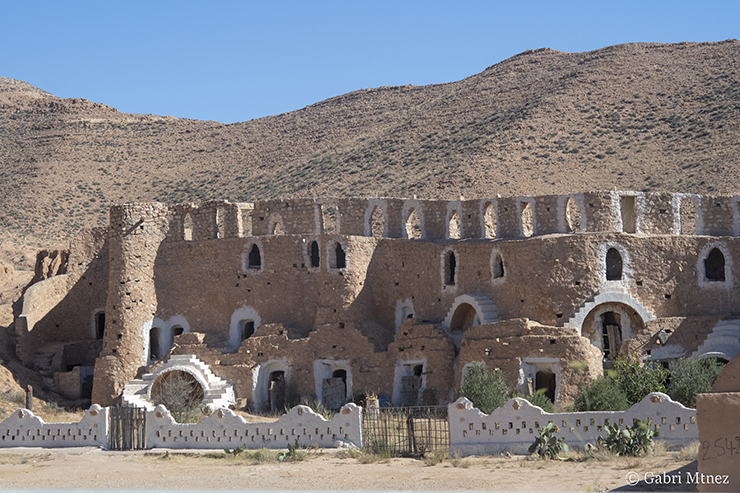
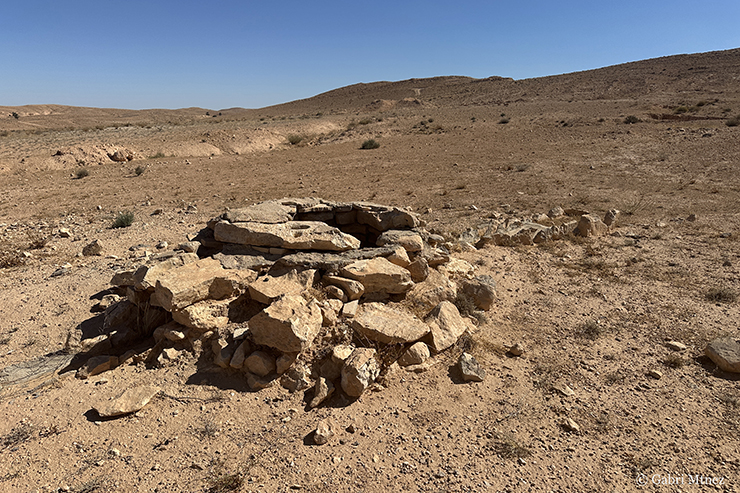
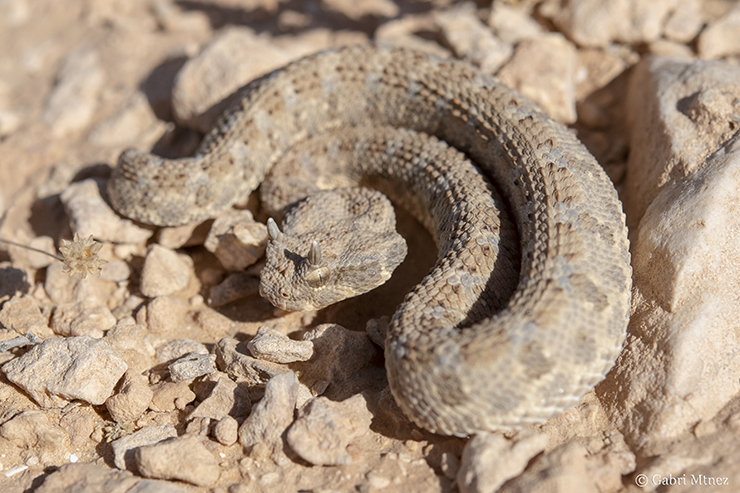
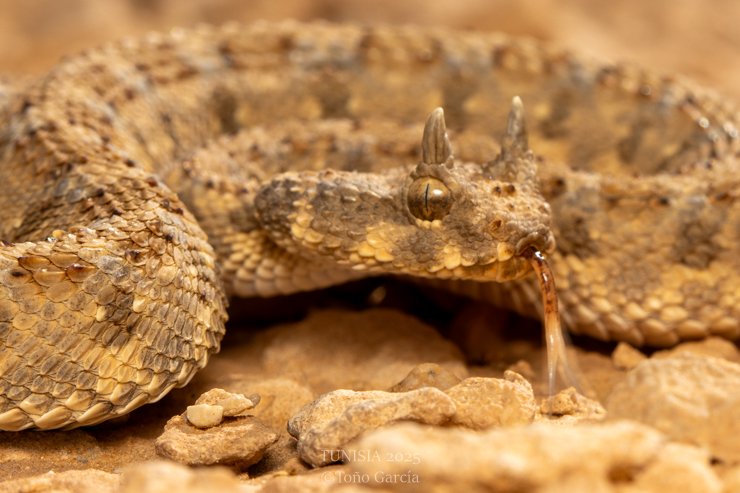
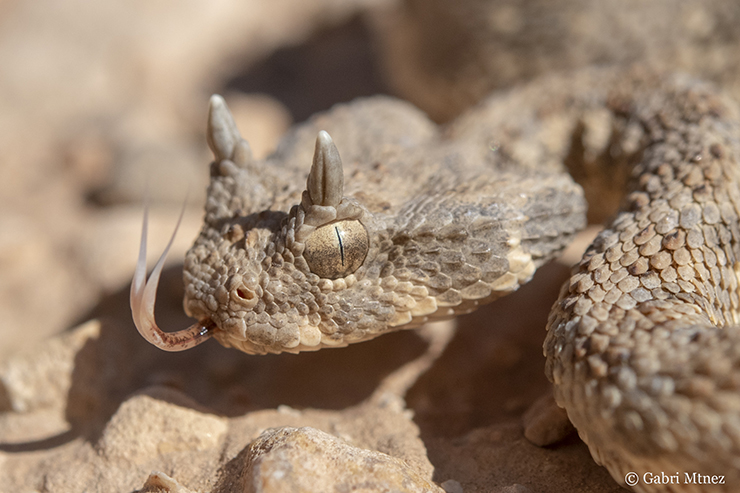

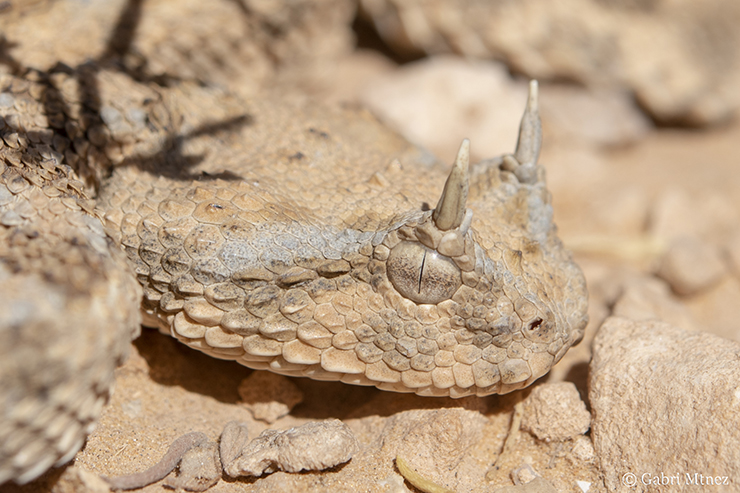
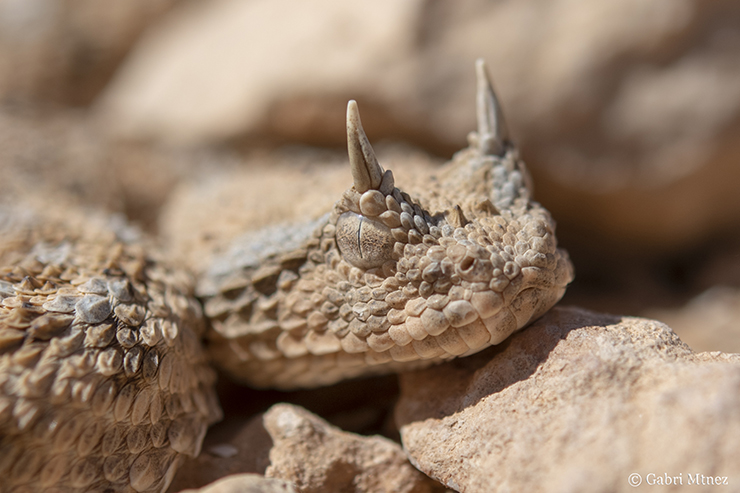
With all the top species got we drove directly to the north and arrived to the capital in the evening. The Tunisia trip ended. We were fully satisfied although we will need to return to find adult Pleurodeles nebulosus, Bufo spinosus, alive Uromastyx acanthinura, Trapelus tournevillei, Psammodromus blanci, Eryx jaculus, Daboia mauritanica, Cerastes vipera and Naja haje.

Acknowledgements
To David Brouwer, Tomas Mazuch and Alexandru Strugariu that gave us some spots, most of them we couldn´t visit because of the short trip. To the Tunisia people, we felt during the whole trip extremely safe. And specially to our Tunisia-Algerian partners that helped us a lot during the trip.
Bibliography
- Arnold N, Robinson M & Carranza S. 2009. A preliminary analysis of phylogenetic relationships and biogeography of the dangerously venomous Carpet Vipers, Echis (Squamata, Serpentes, Viperidae) based on mitochondrial DNA sequences. Amphibia-Reptilia, 30: 273-282.
- Martínez del Mármol Marin, G, Rebollo Fernández B & Mazuch T. 2012. Reflexions about potential distribution of Echis leucogaster in North Africa.
Published on July 26, 2012. Available from http://moroccoherps.com/en/reflexions-about-potential-distribution-of-echis-leucogaster-in-north-africa/. Accessed June, 16th, 2025. - Martínez-Solano I, Buckley D & Velo-Anton G. 2015. Filogeografía comparada de los géneros Pelophylax y Discoglossus en el nortr de África. Instituto de Estudios Ceutíes. 79 pp.
- Pook C, Joger U, Stümpel N & Wüster W. 2009. When continents collide: Phylogeny, historical biogeography and systematics of the medically important viper genus Echis (Squamata: Serpentes: Viperidae). Molecular Phylogenetics and Evolution, 53. 792-807.
- Salvi D, Perera A, Sampaio FL, Carranza S & Harris DJ. 2018. Underground cryptic speciation within the Maghreb: Multilocus phylogeography sheds light on the diversification of the checkerboard worm lizard Trogonophis wiegmanni. Molecular Phylogenetics and Evolution, 120: 118-128.
- Waldhauser V, Busschau T, Mochales-Riaño G, Scholz S, Martínez-Freiría F, Boissinot S, Carranza S, Schmitz A & Smid J. 2025. Unmasking the Desert Phantom: Genetic Evidence Does Not Support the Validity of the Enigmatic Boehme’s Horned Viper. Zoologica Scripta, 0: 1-6.

